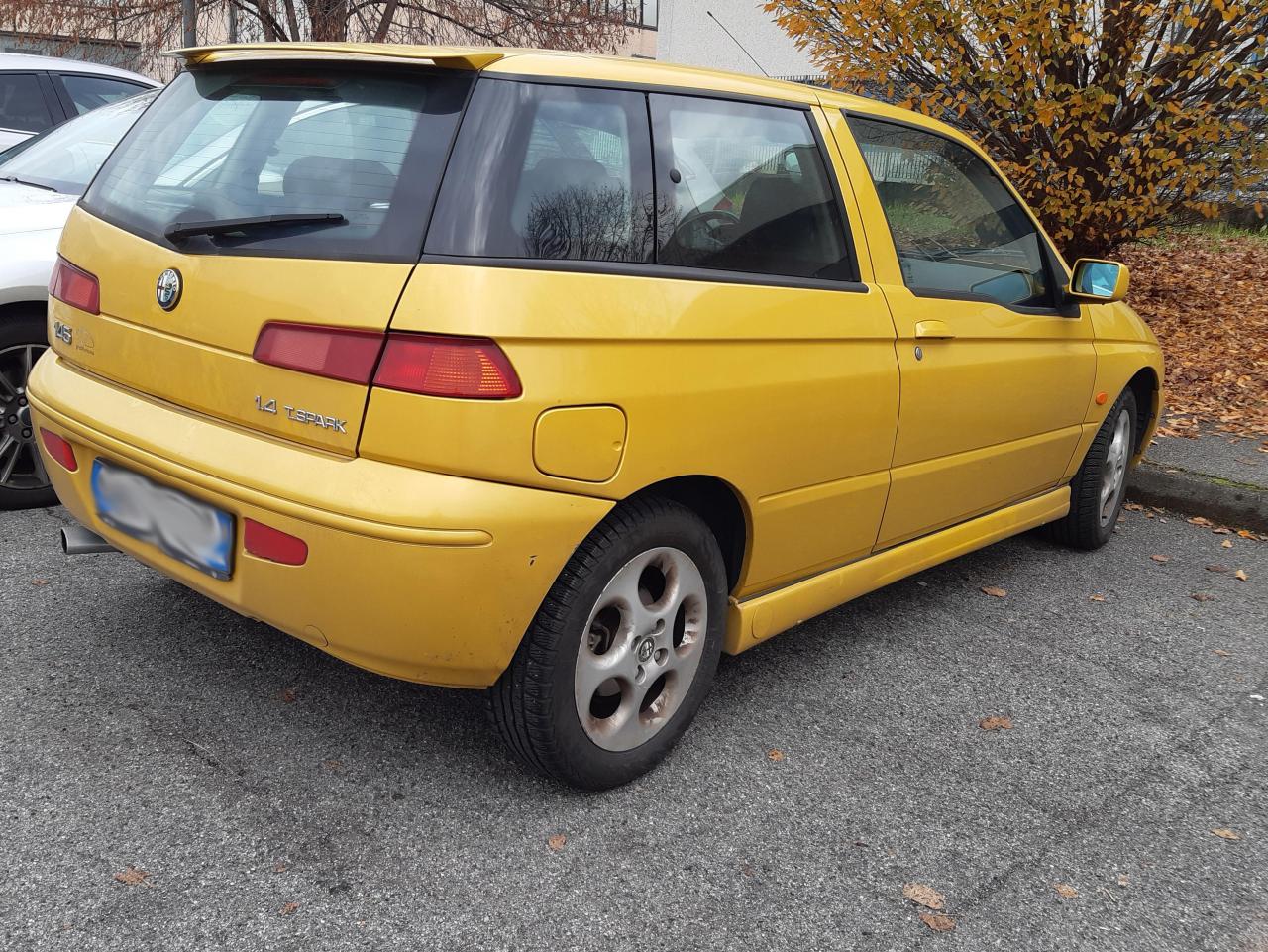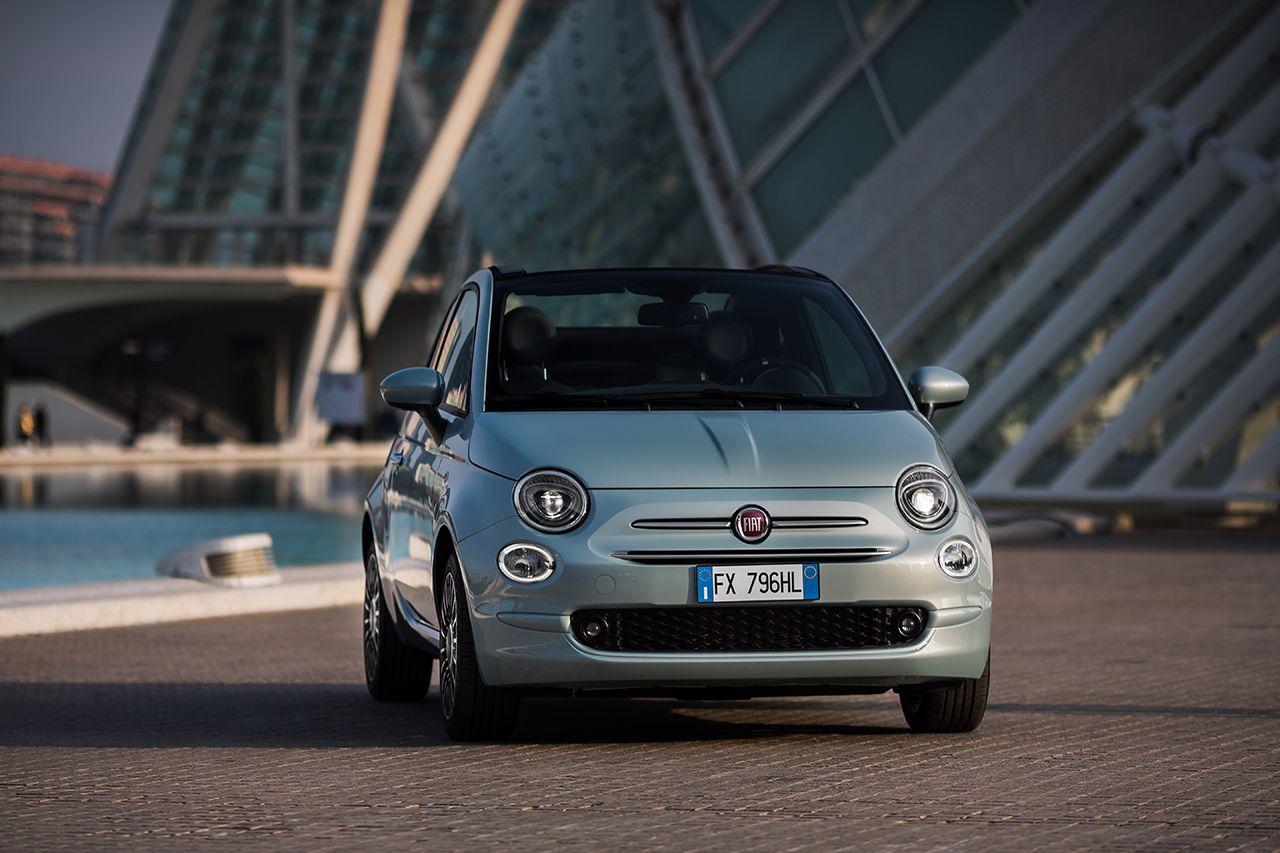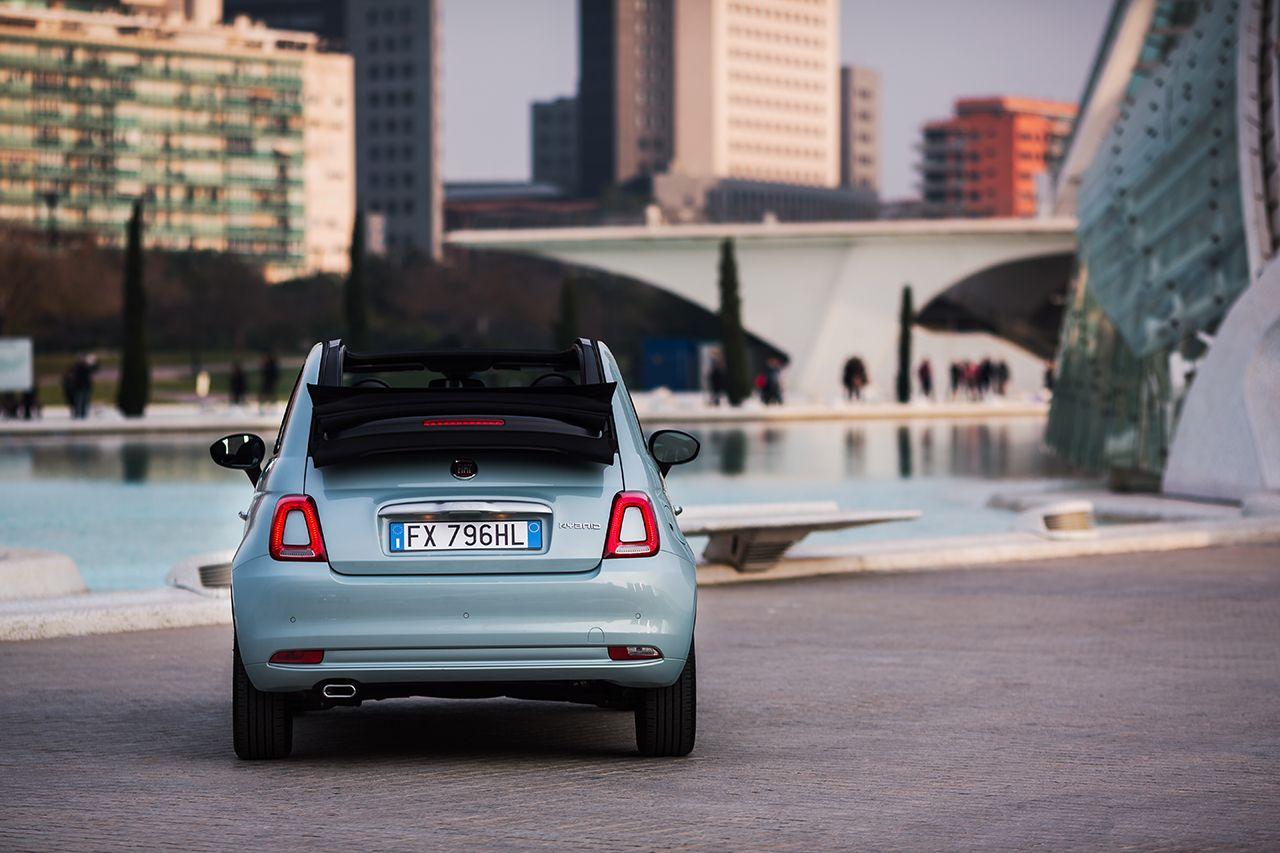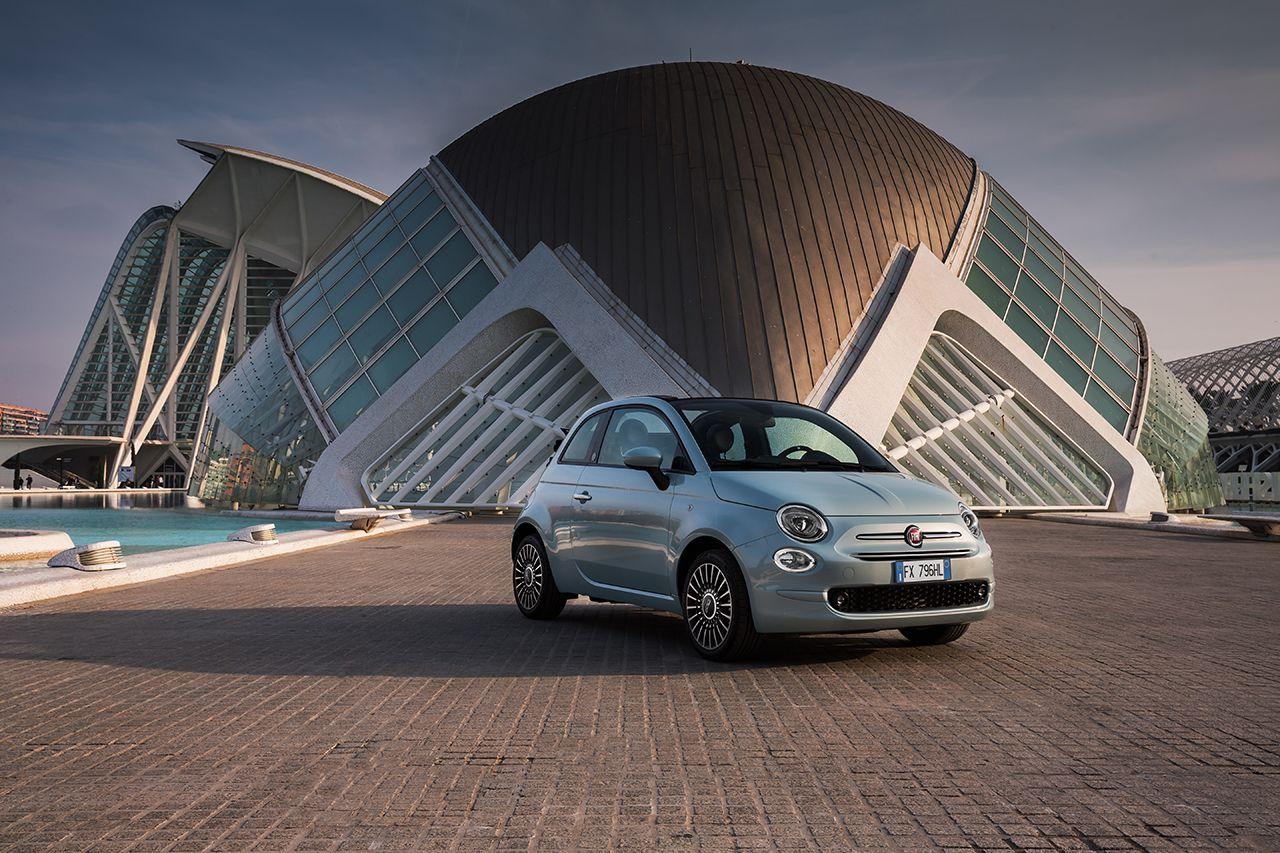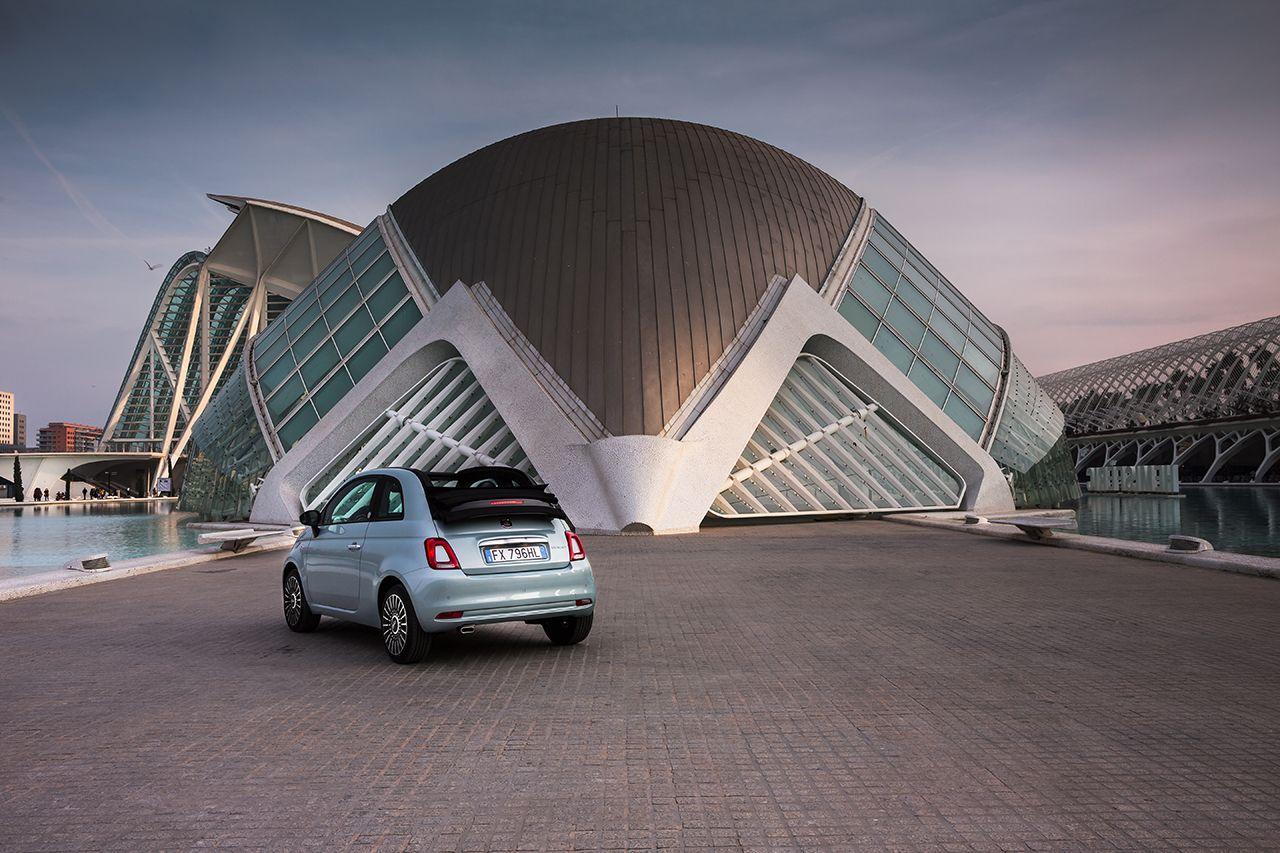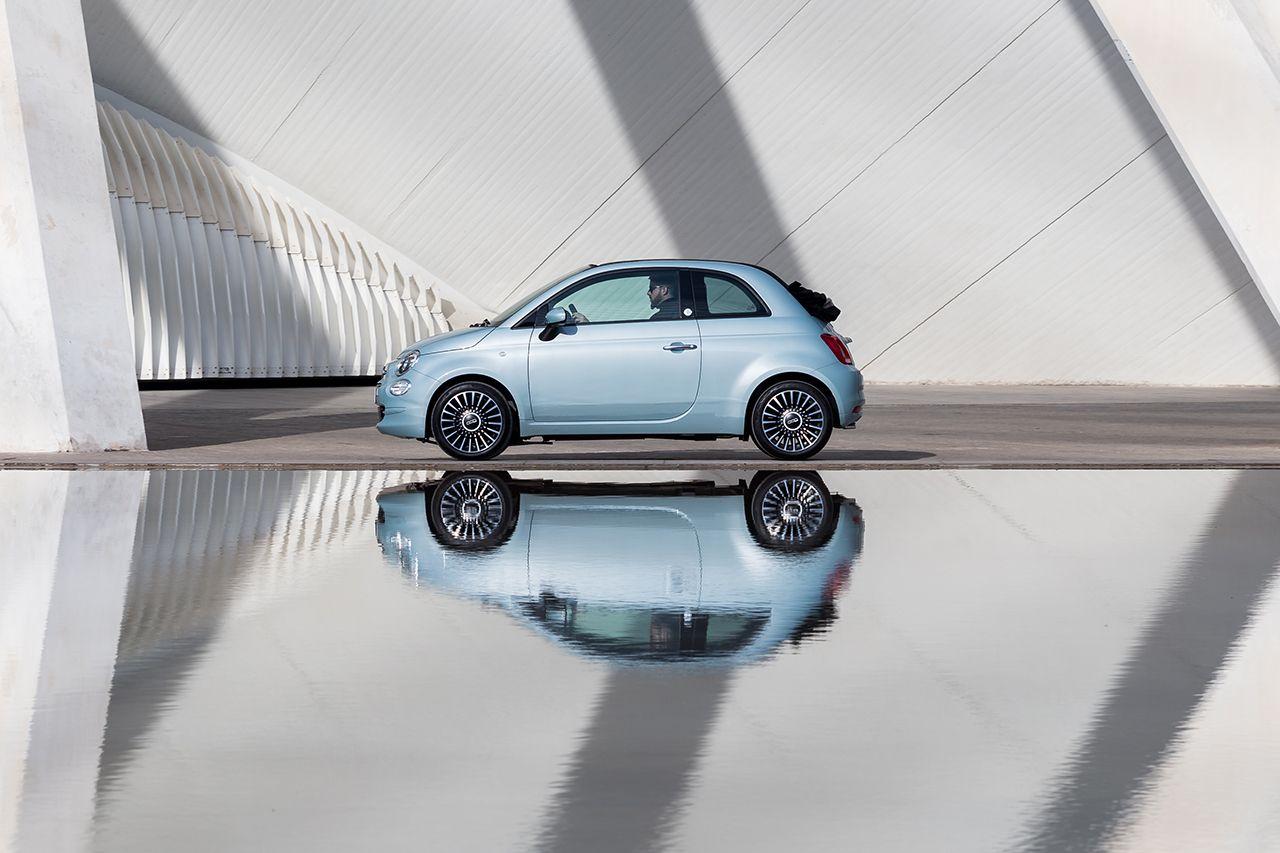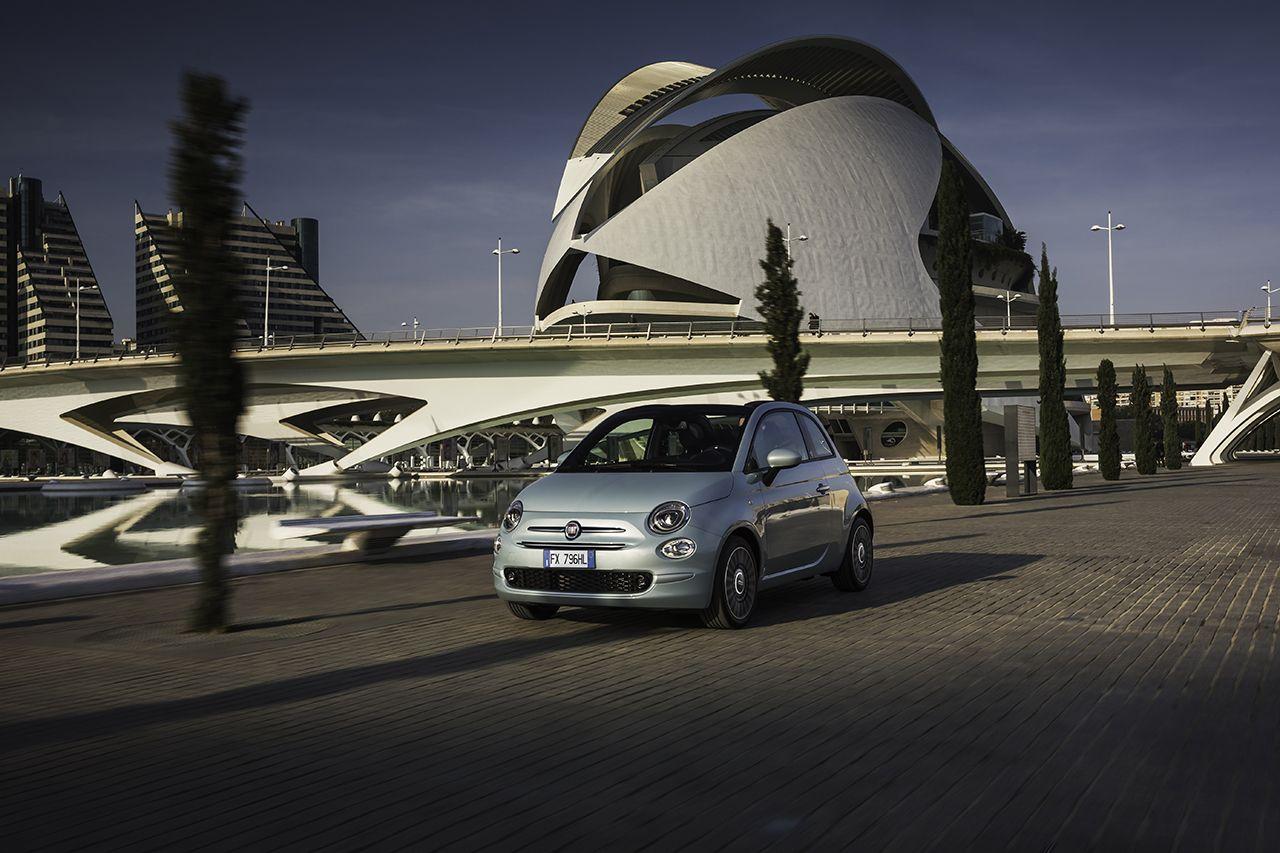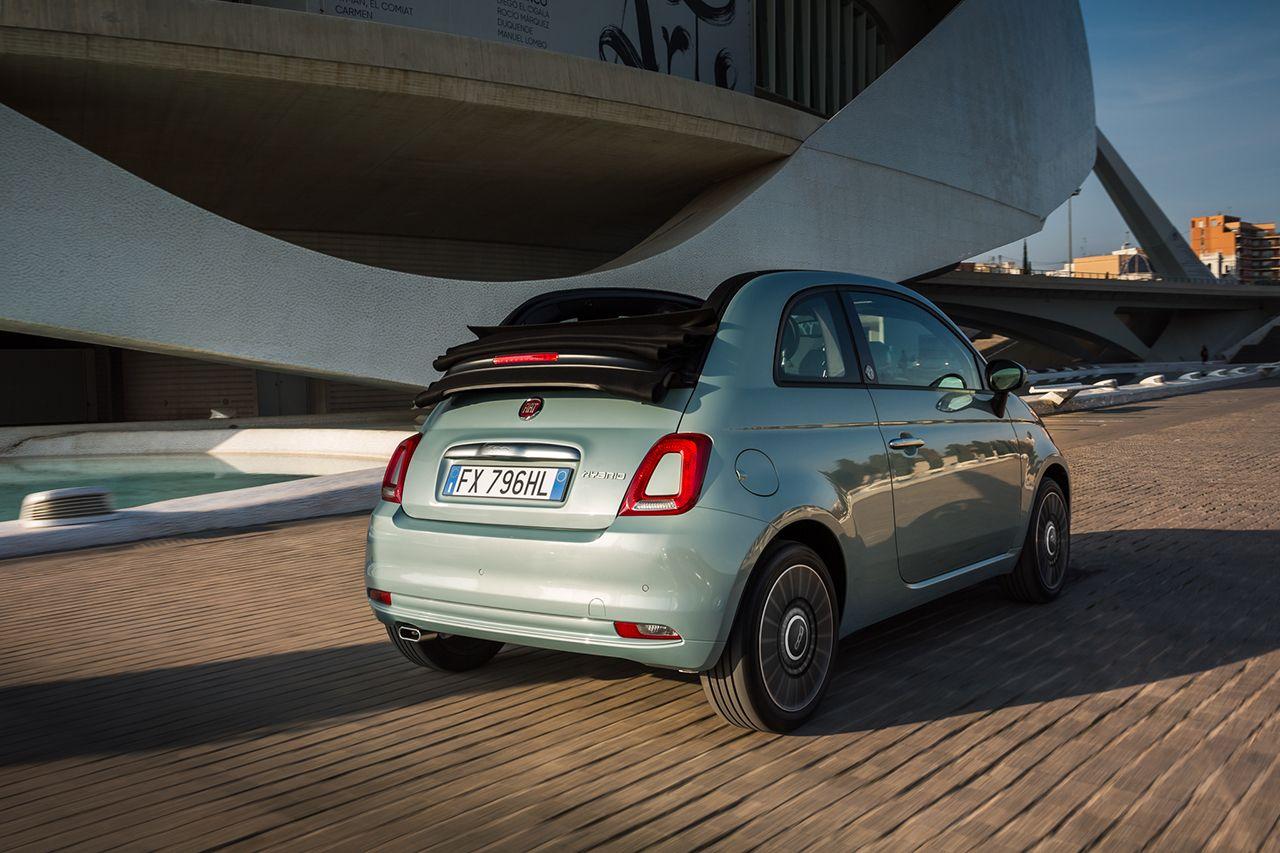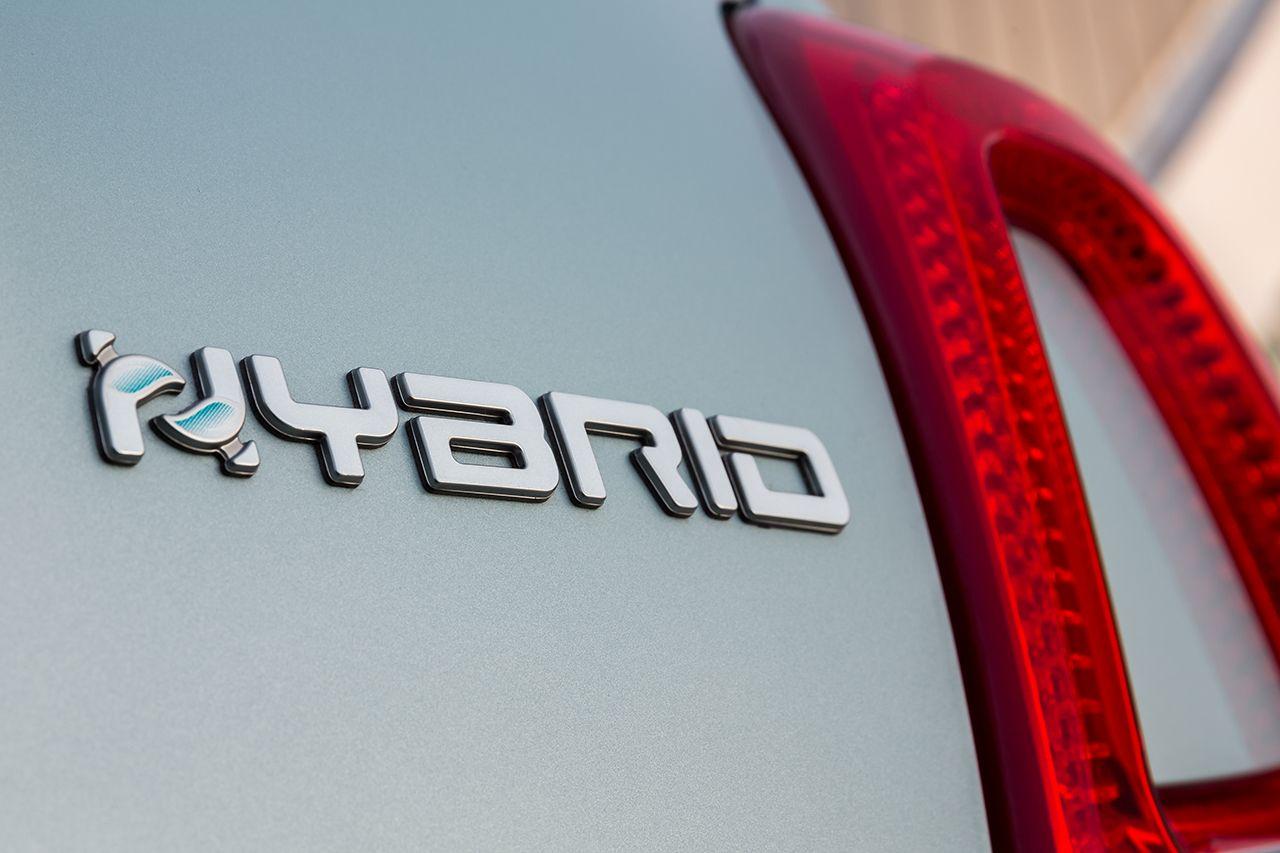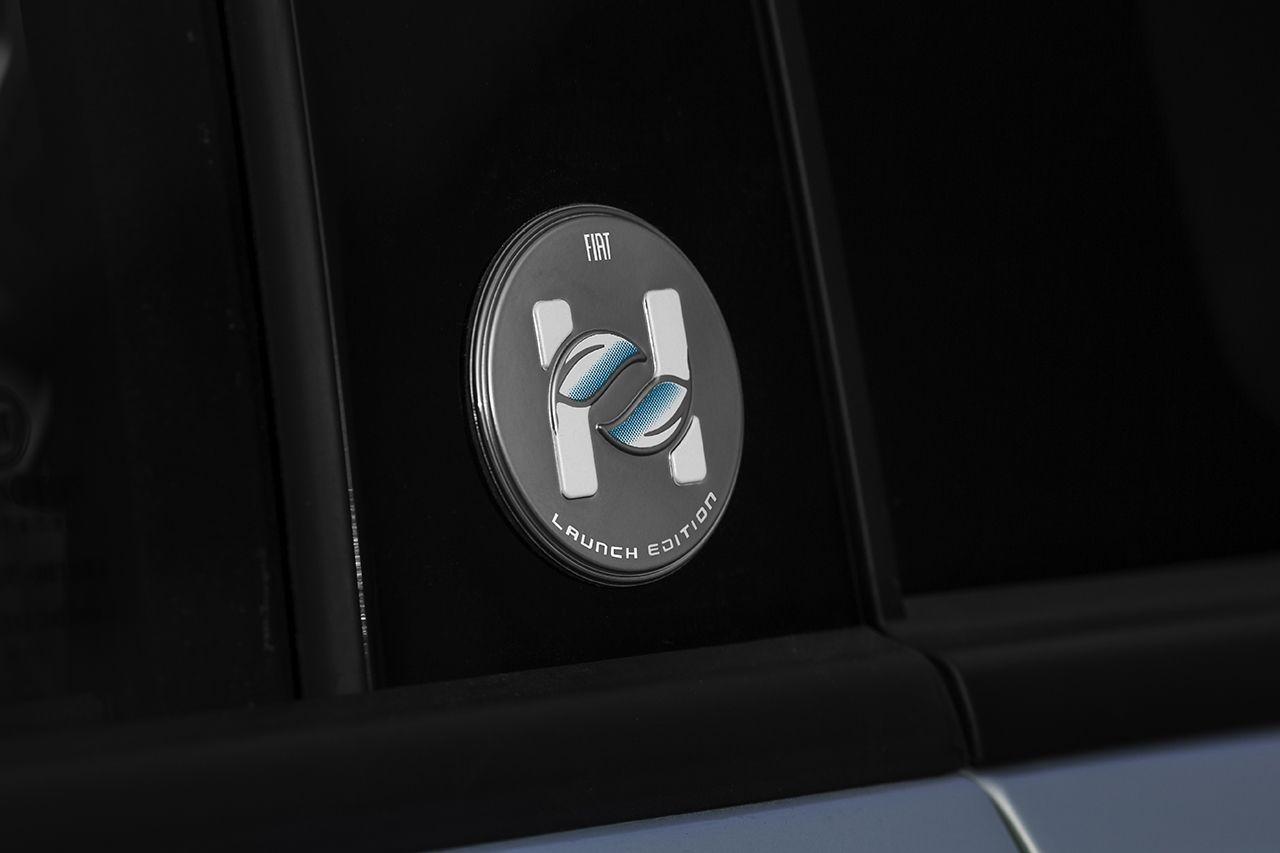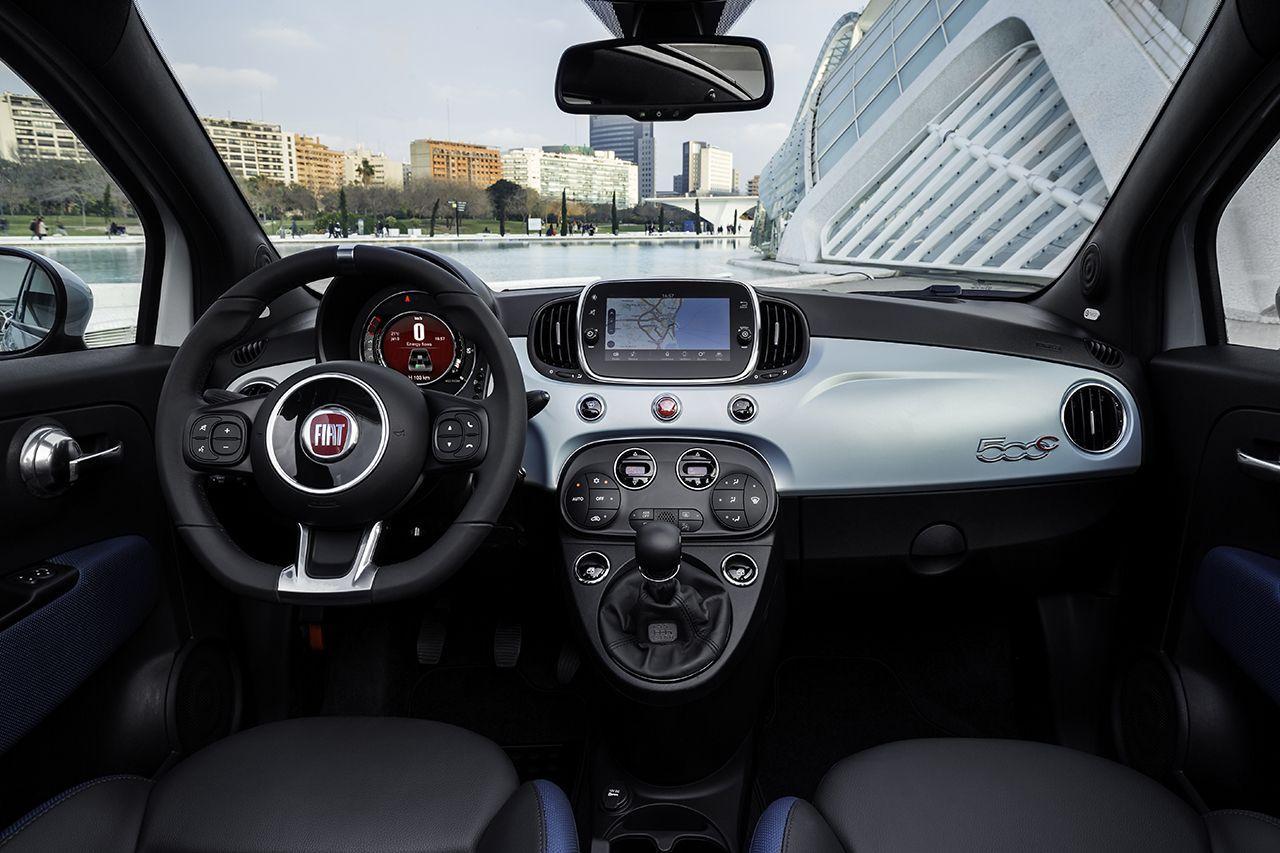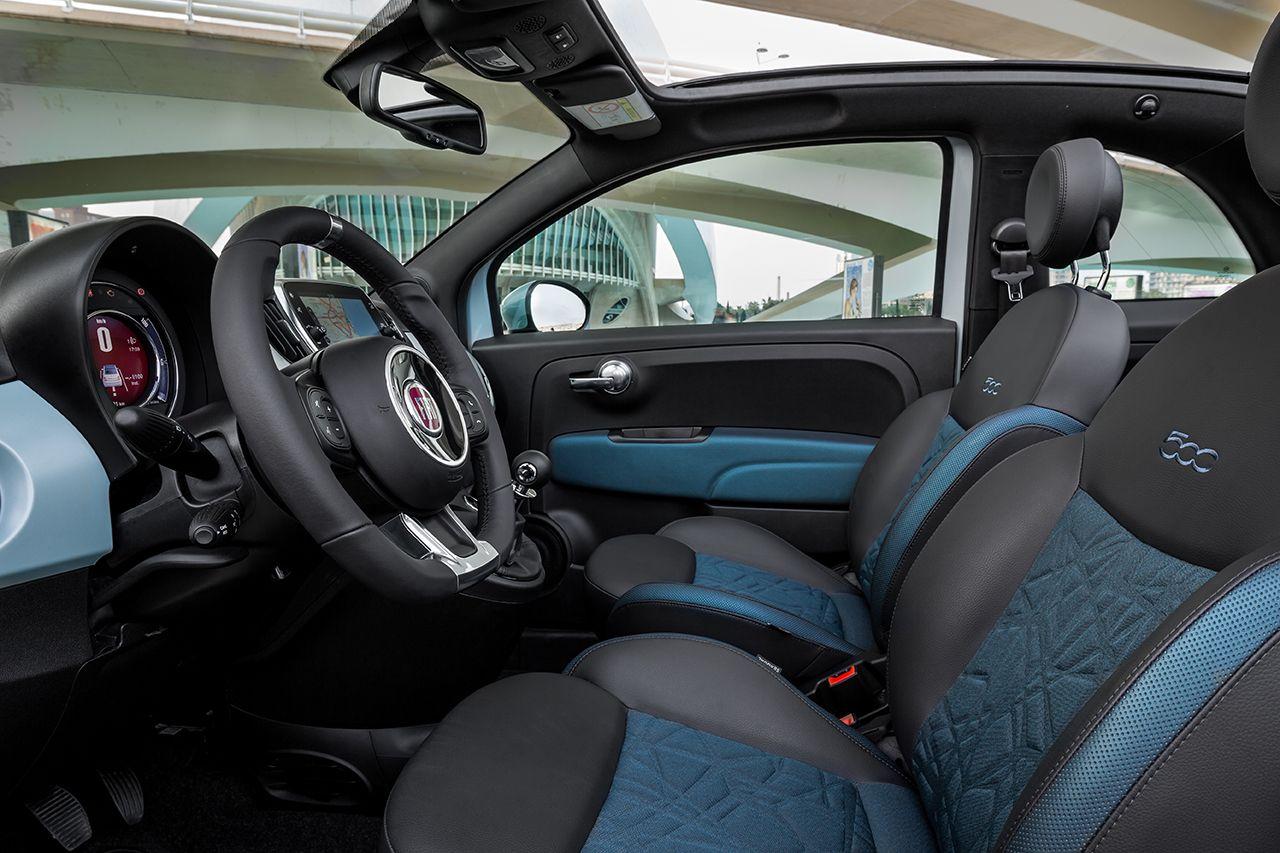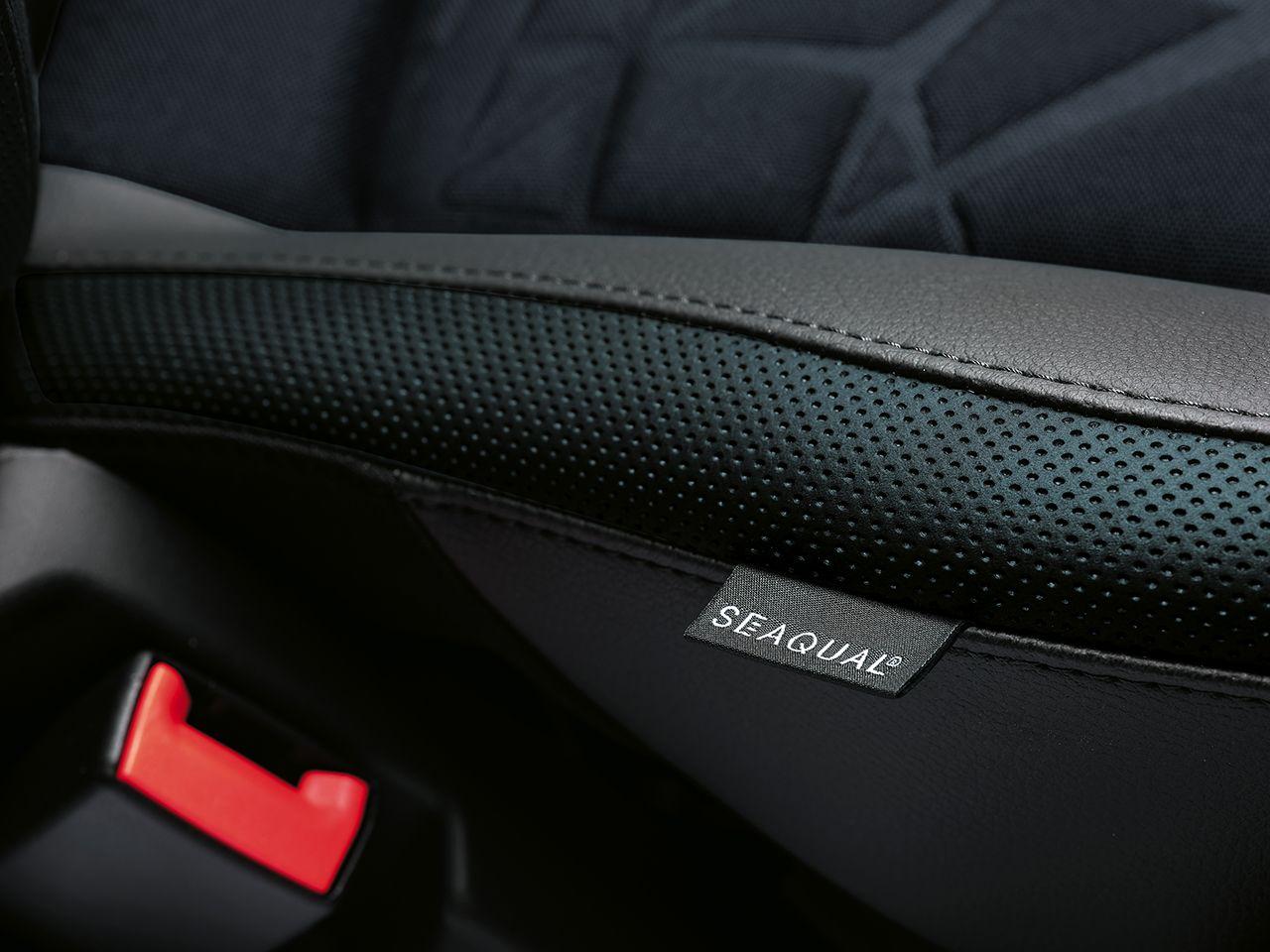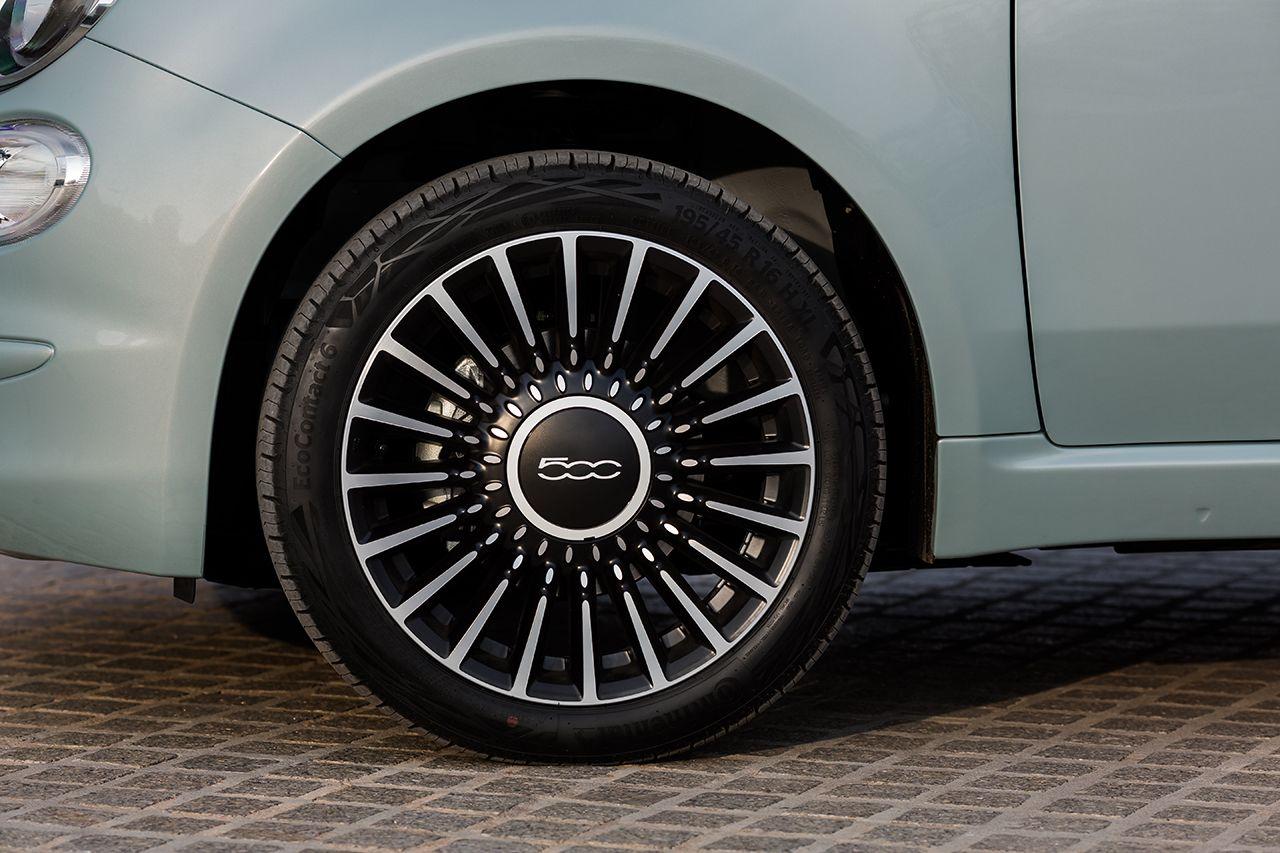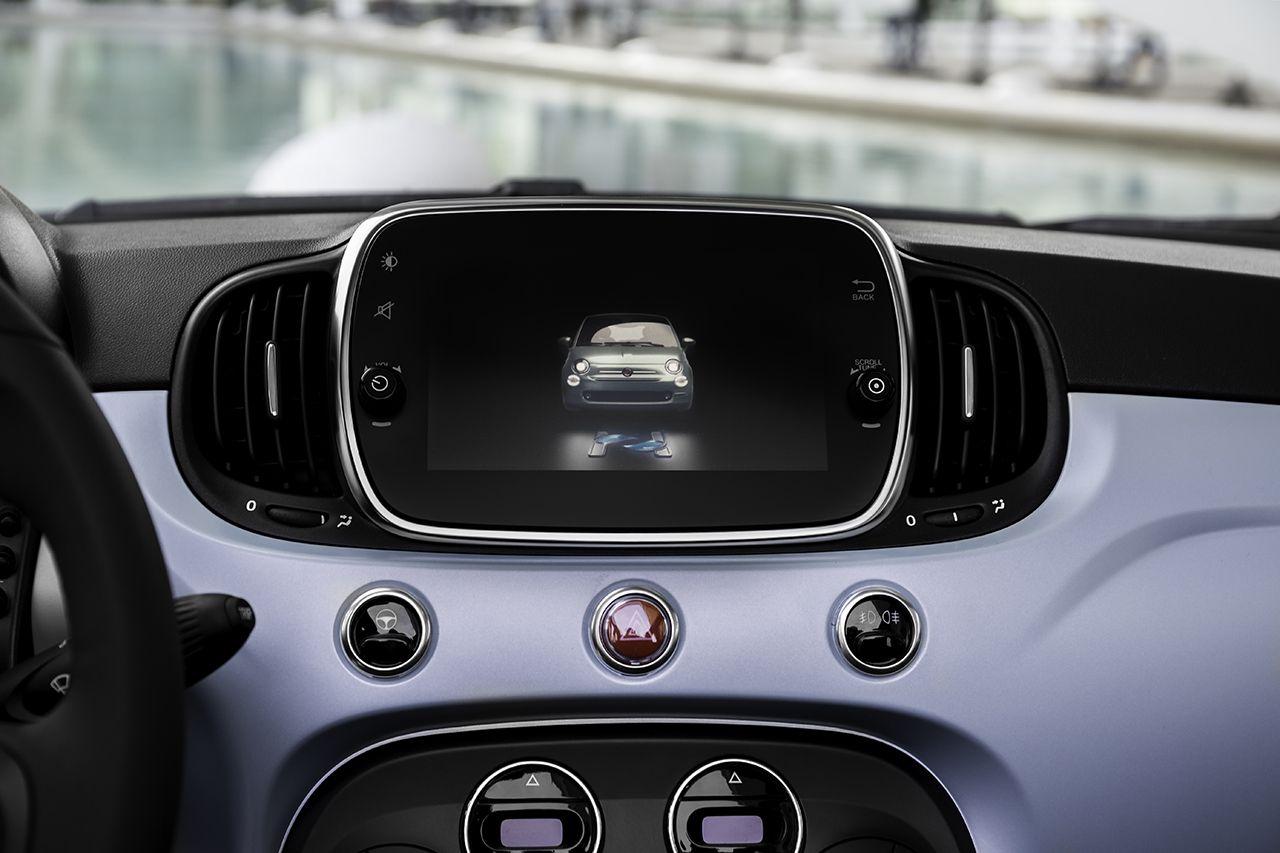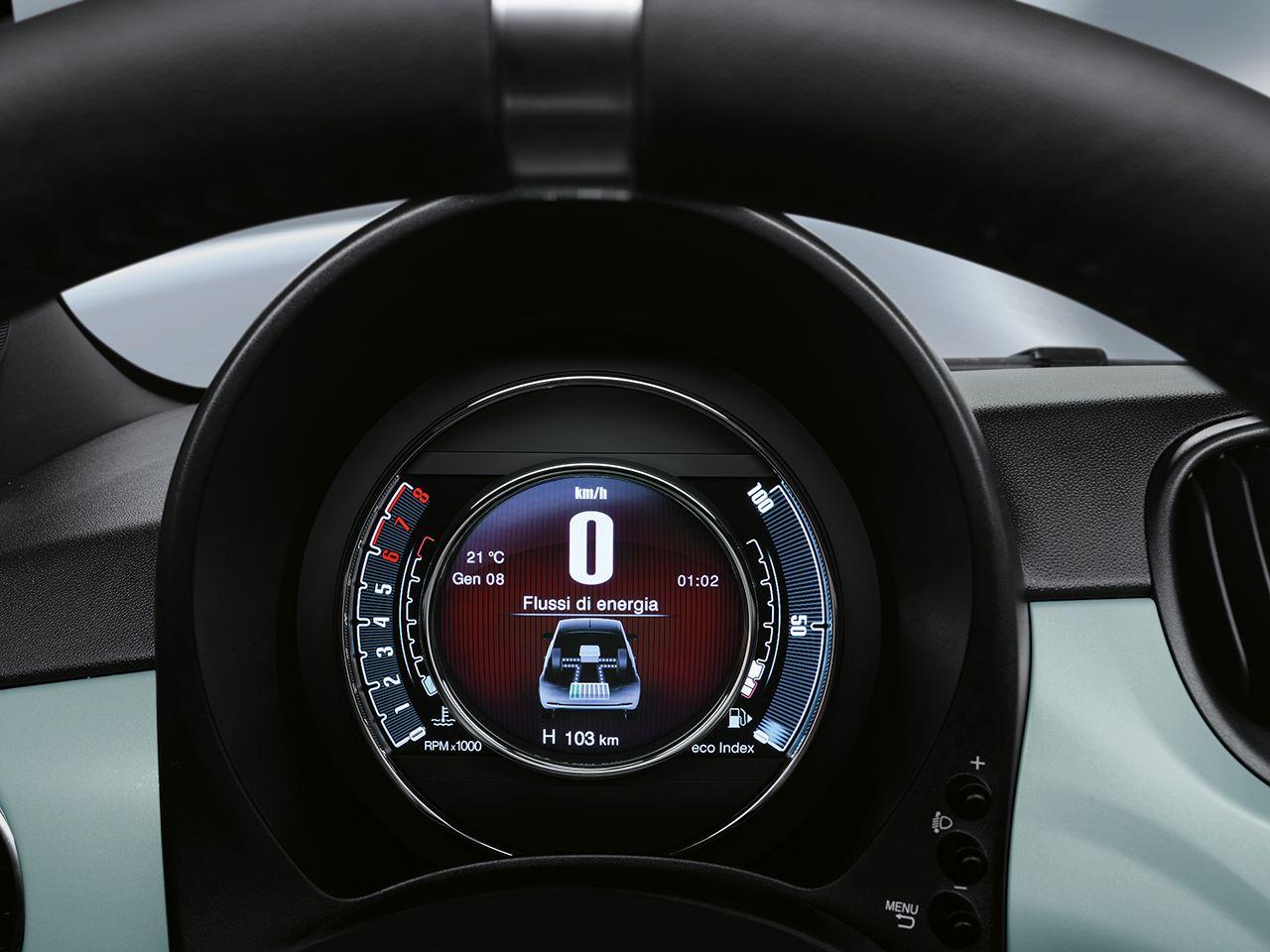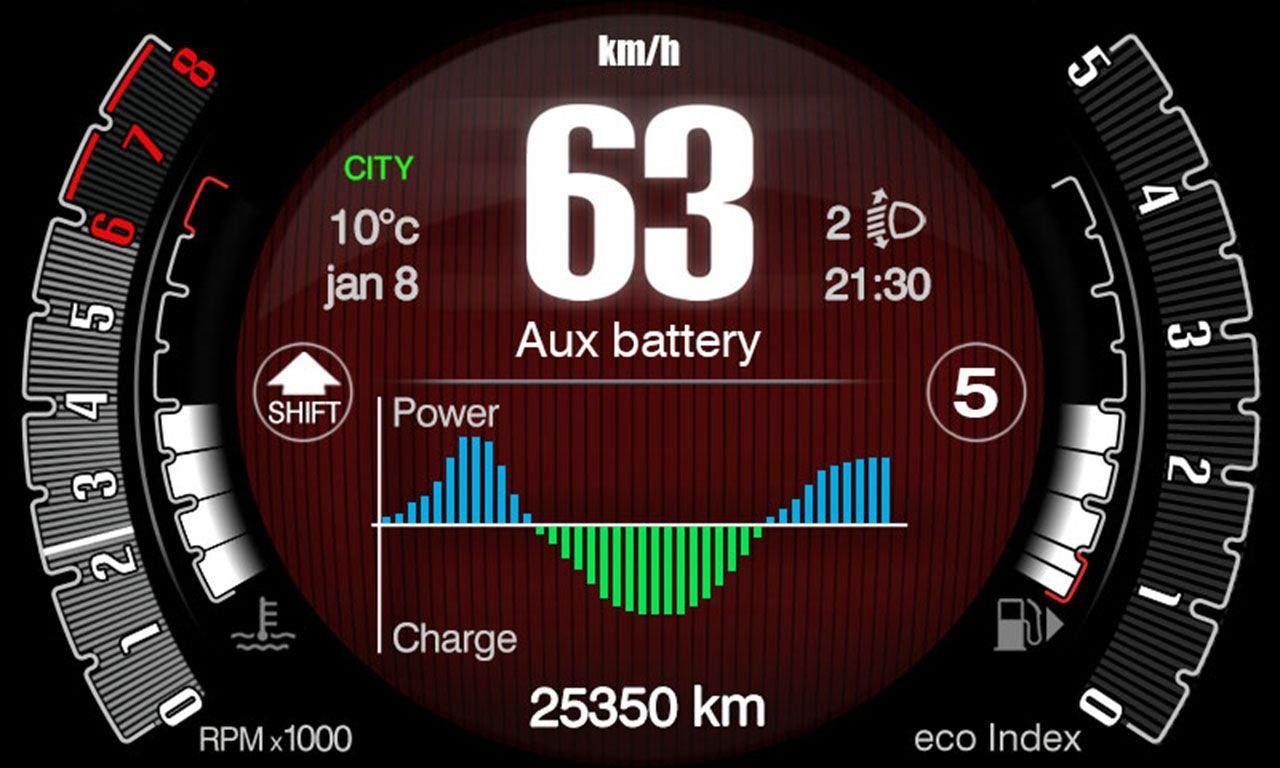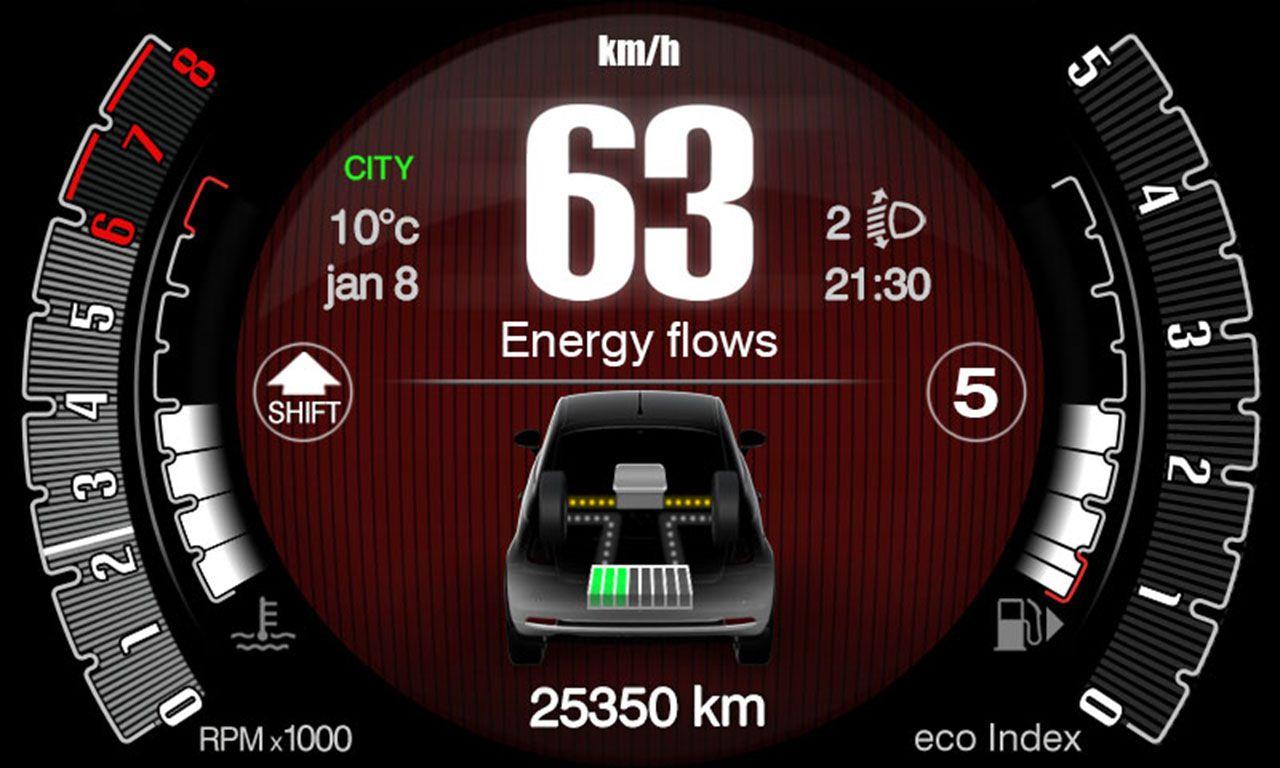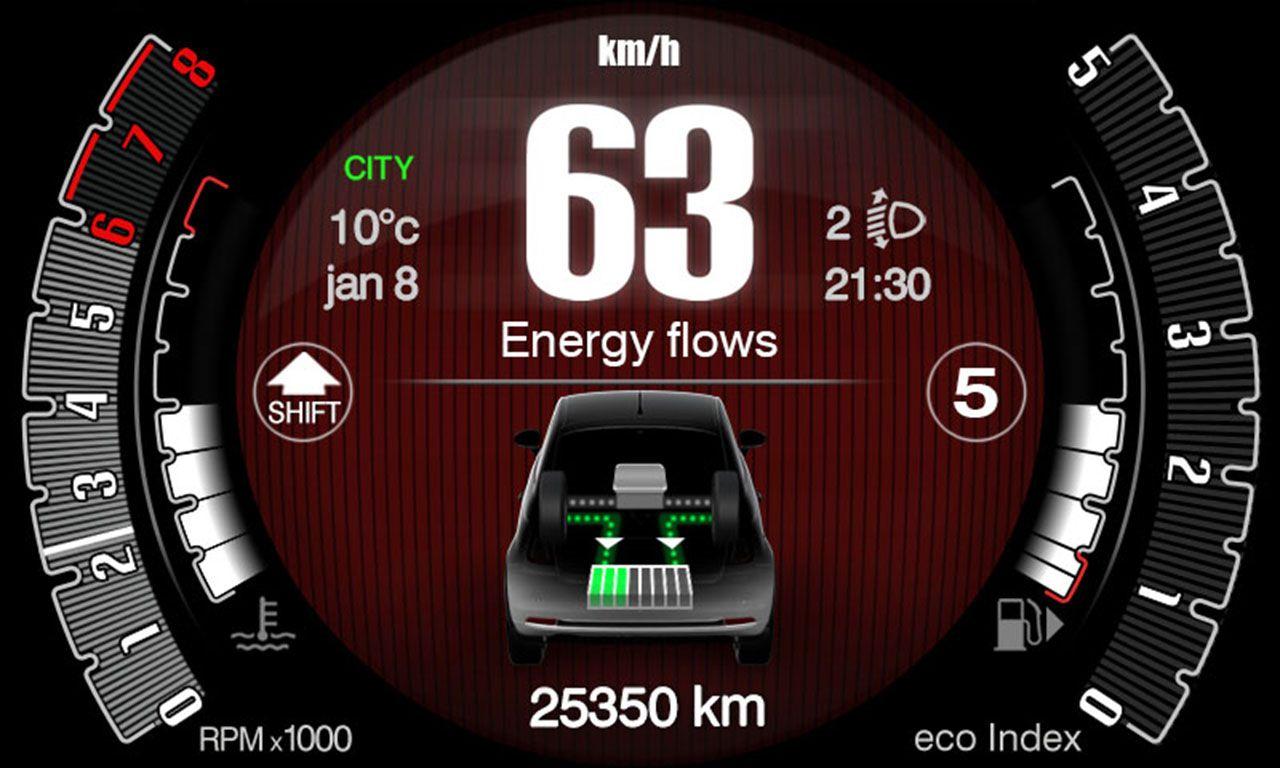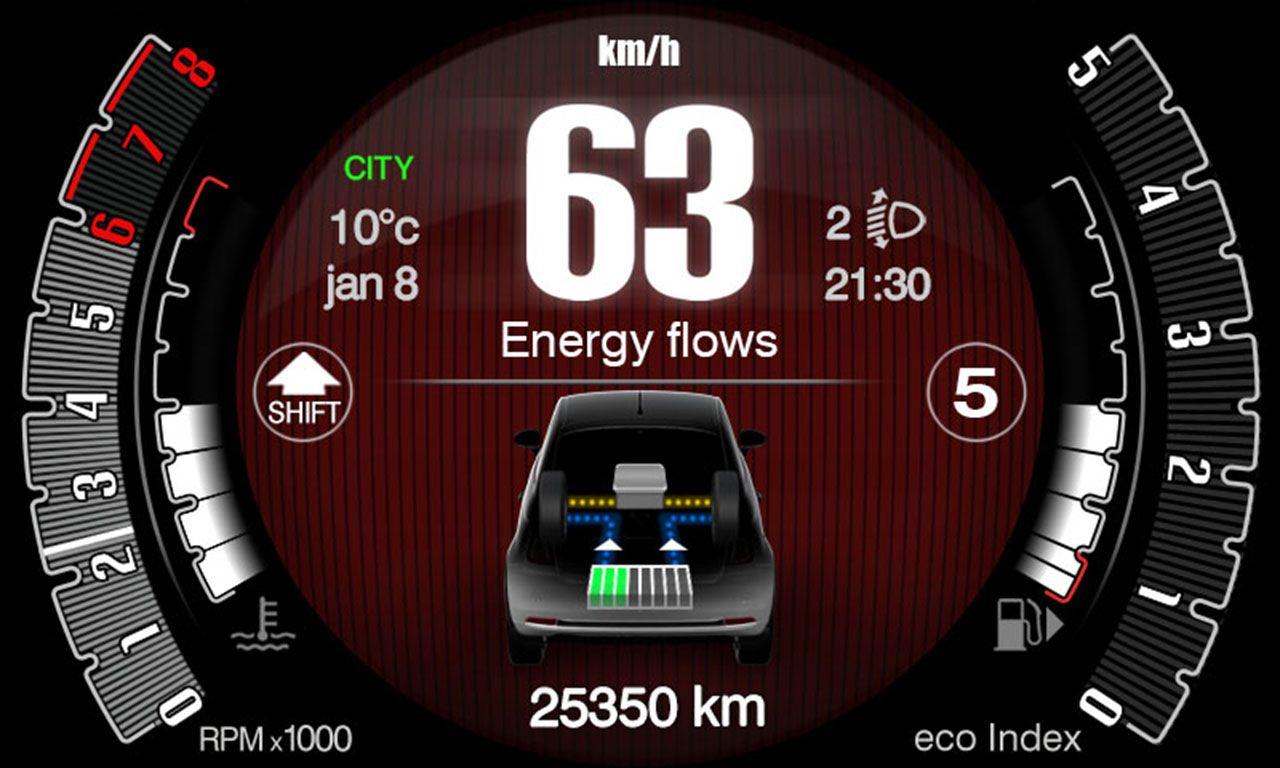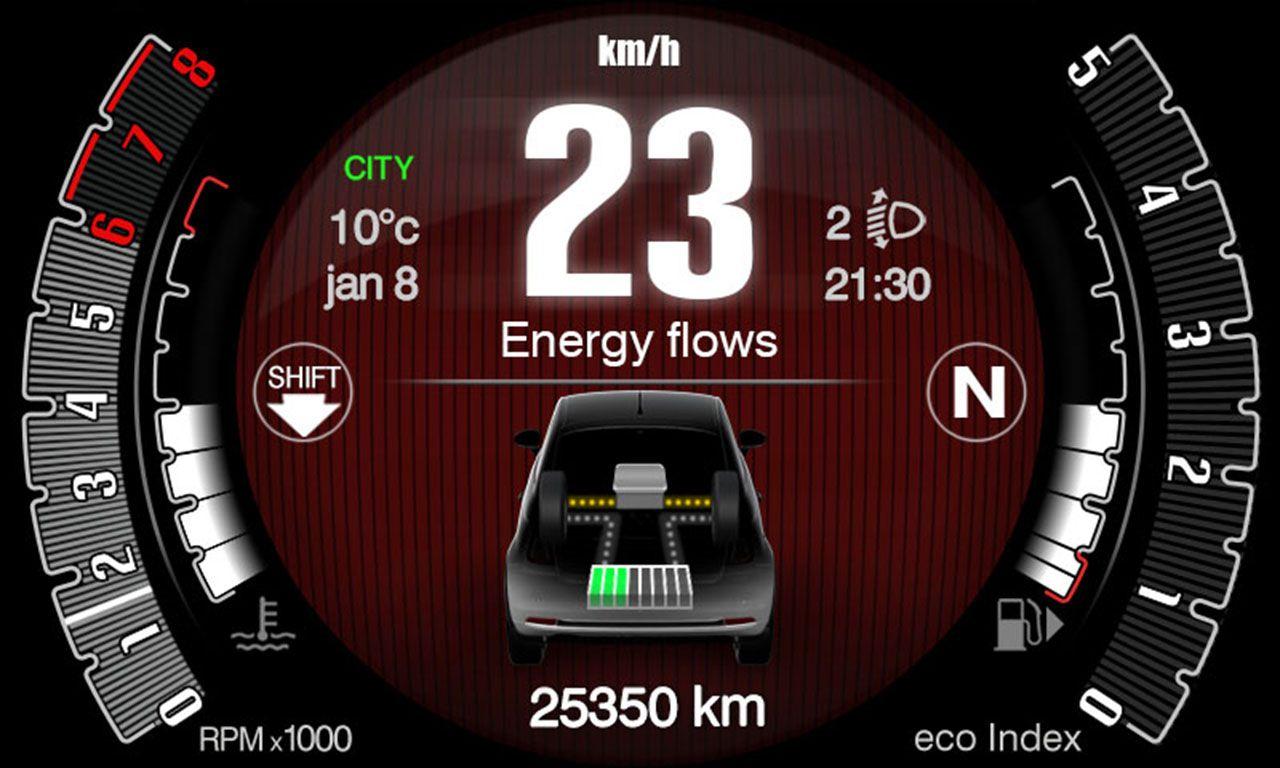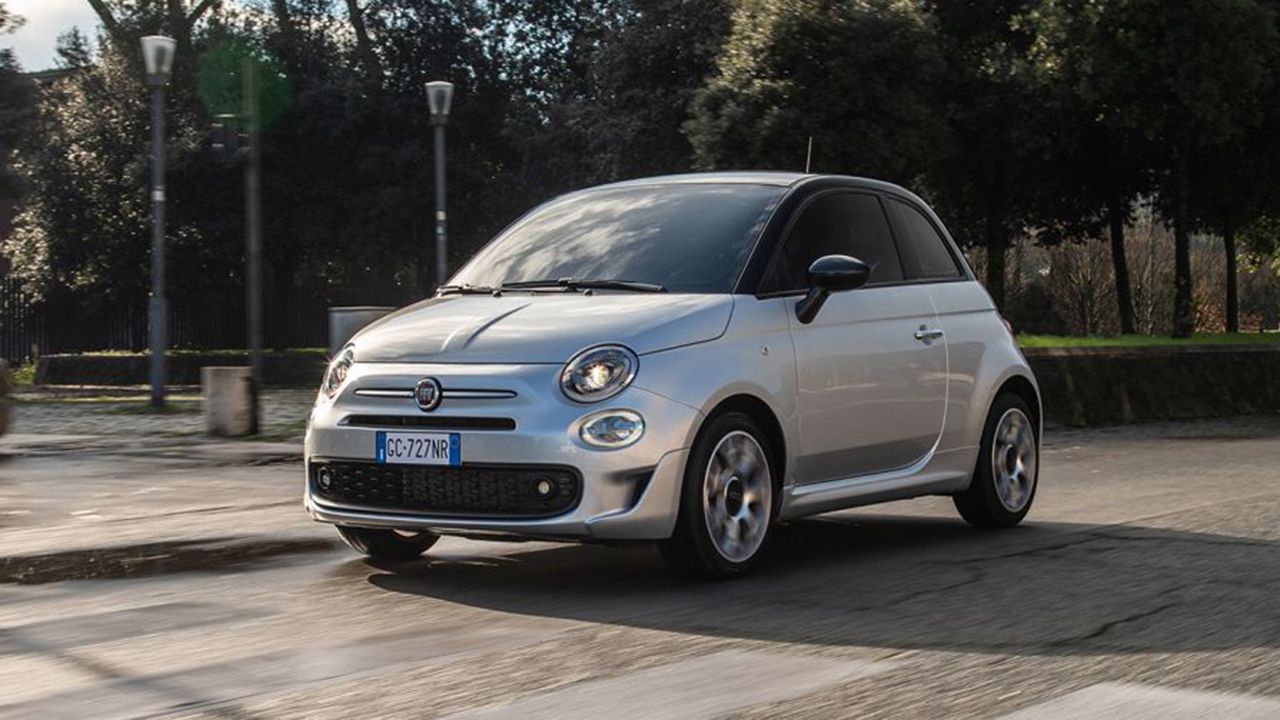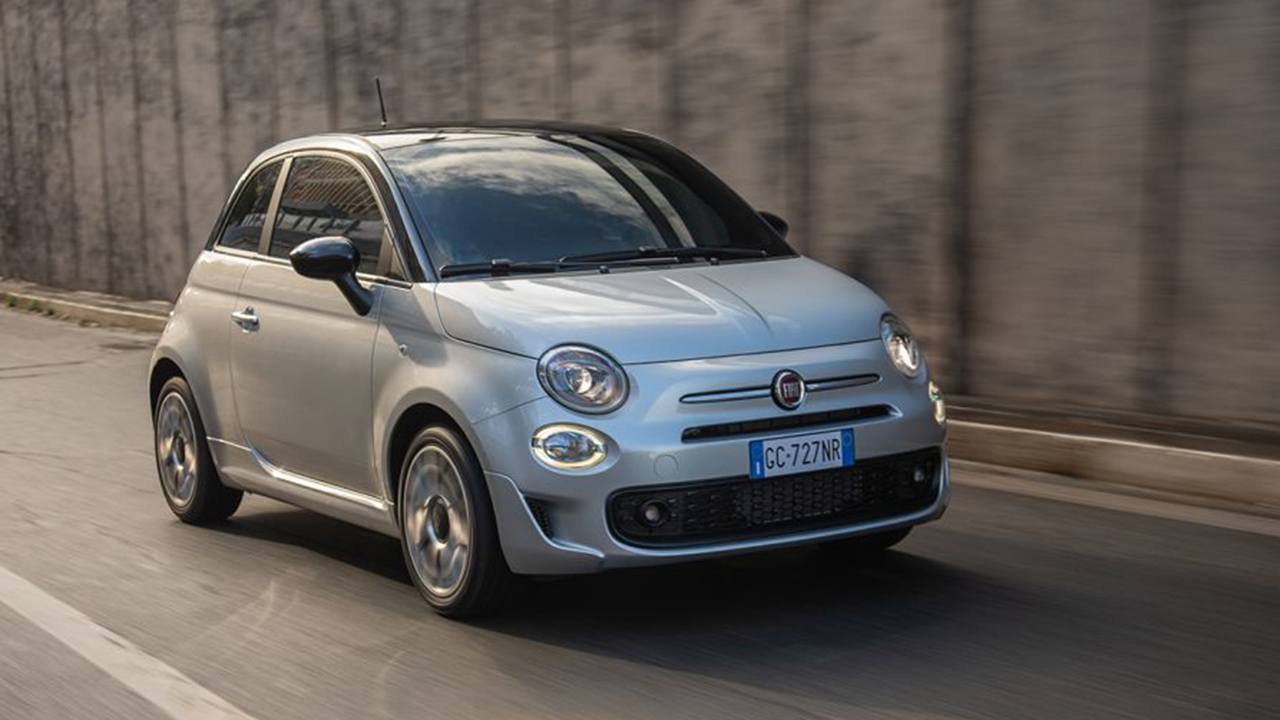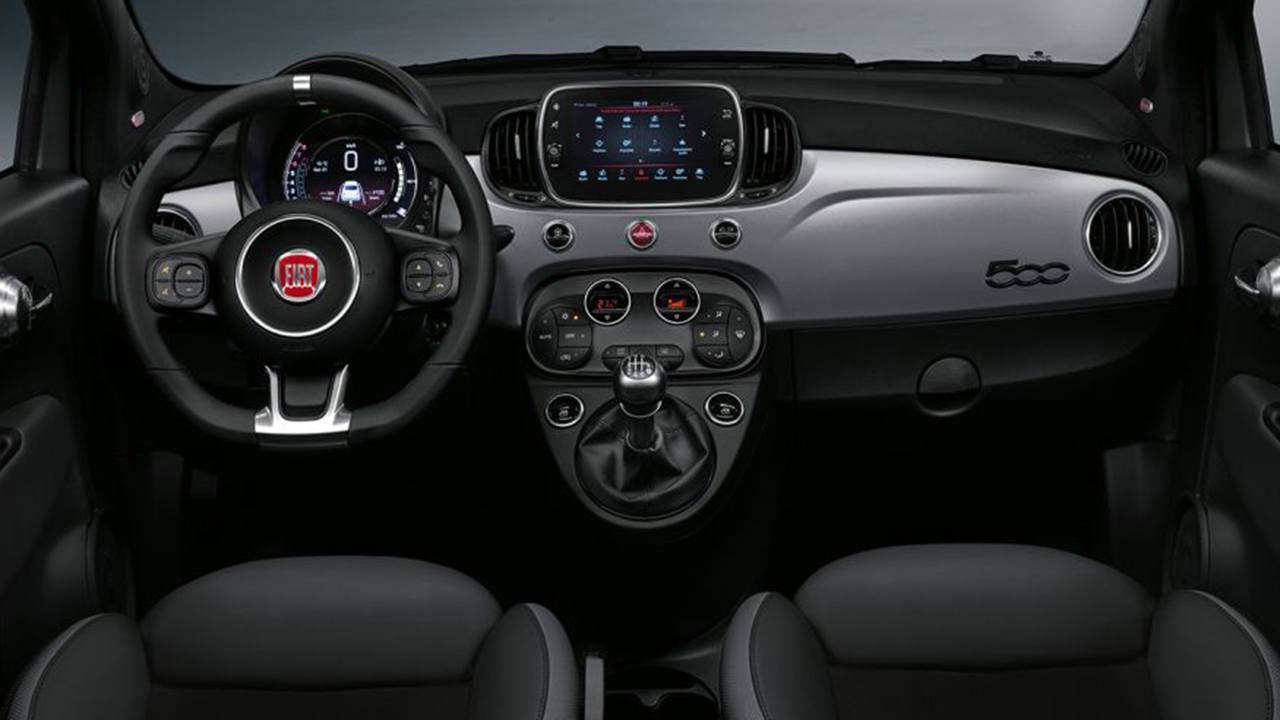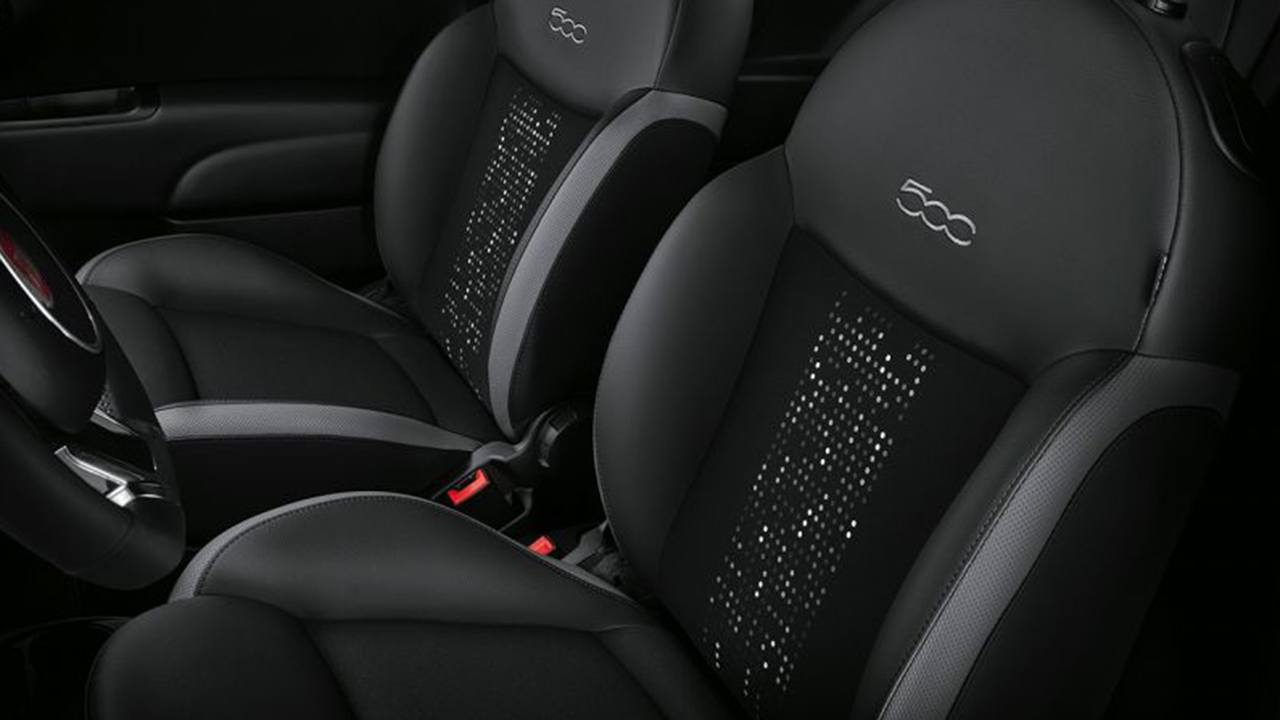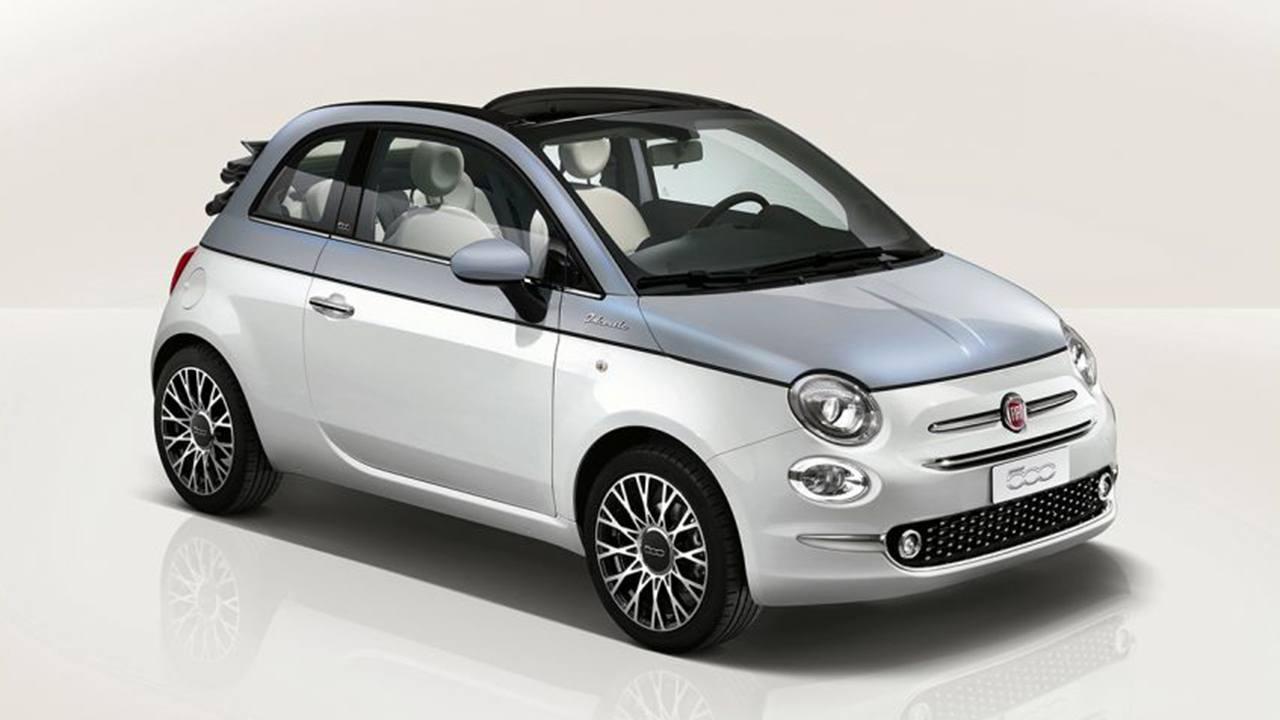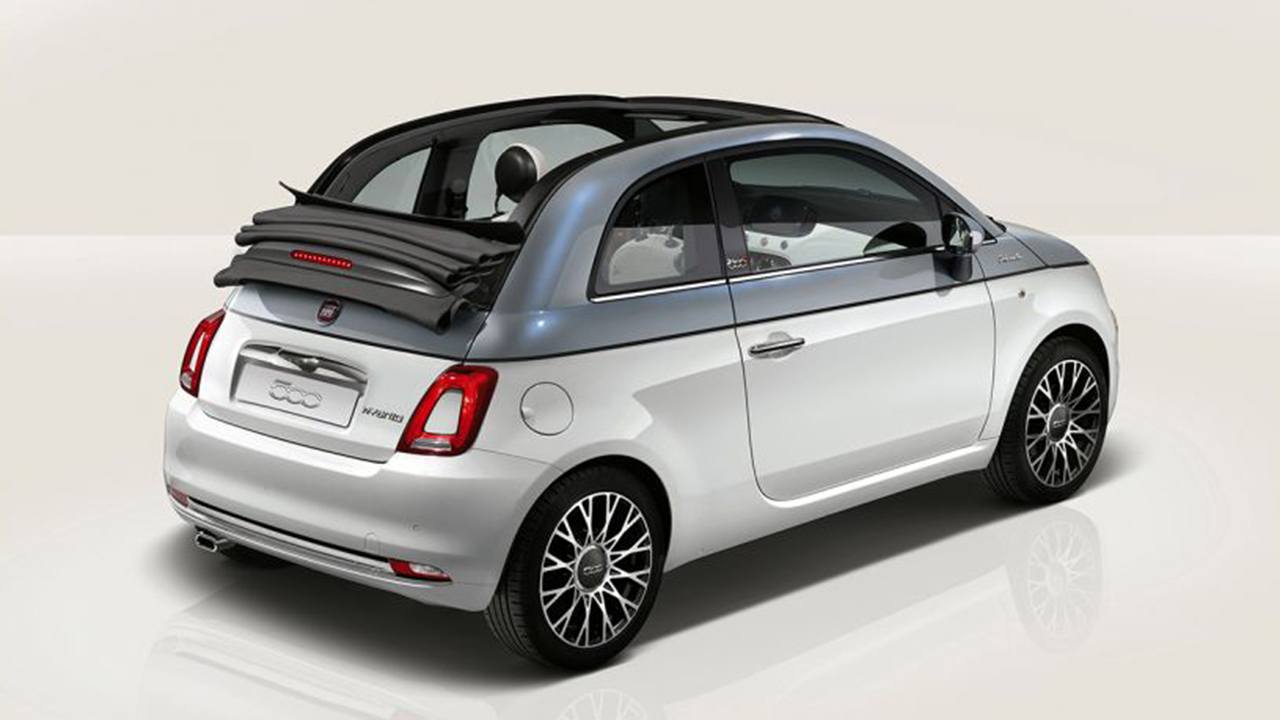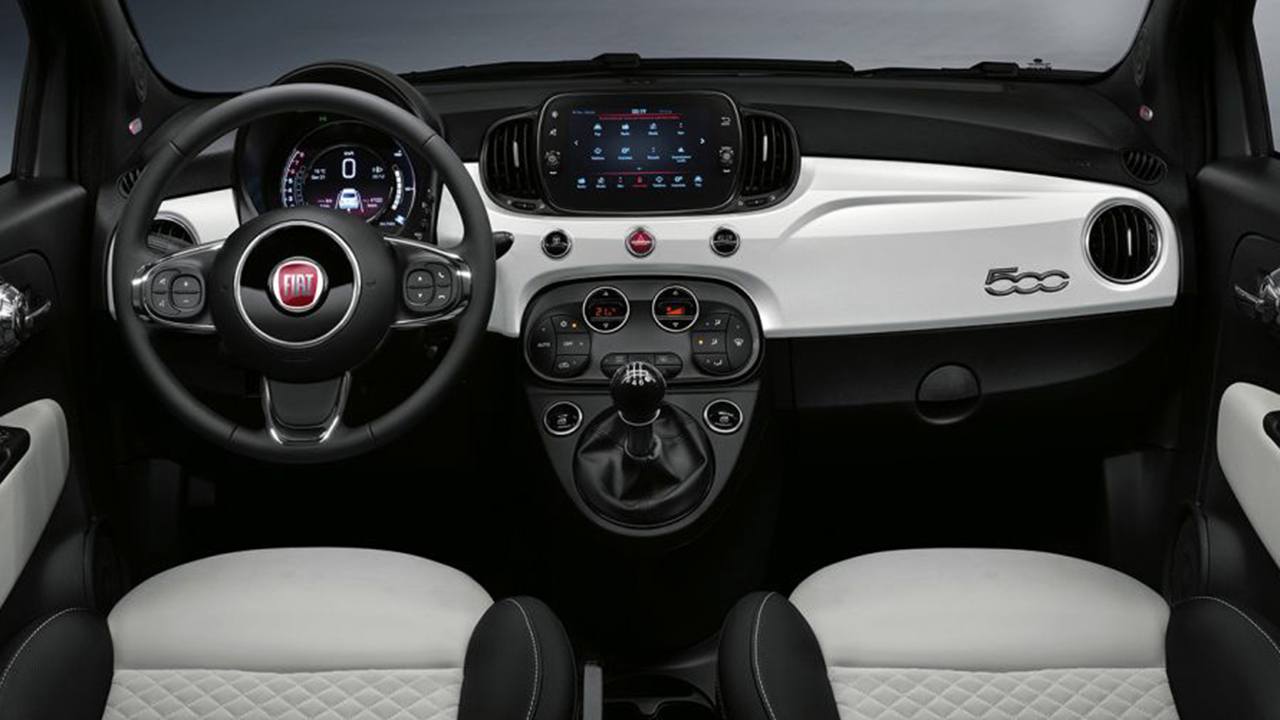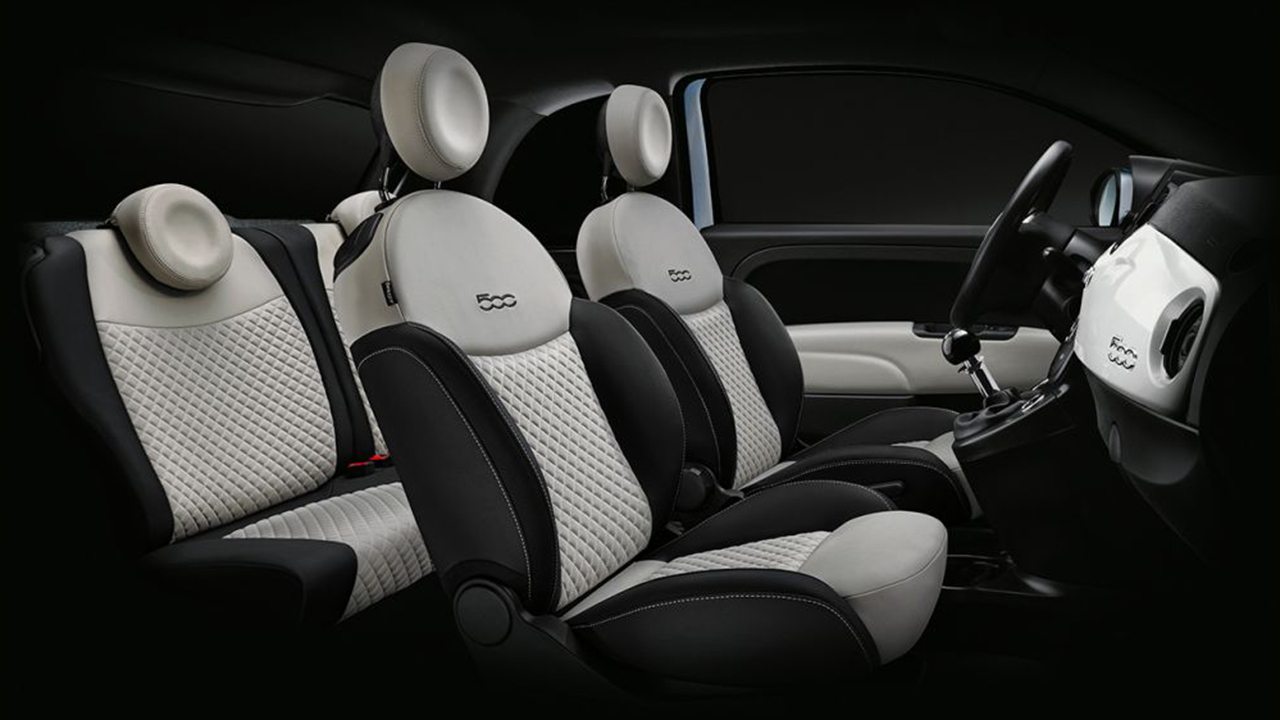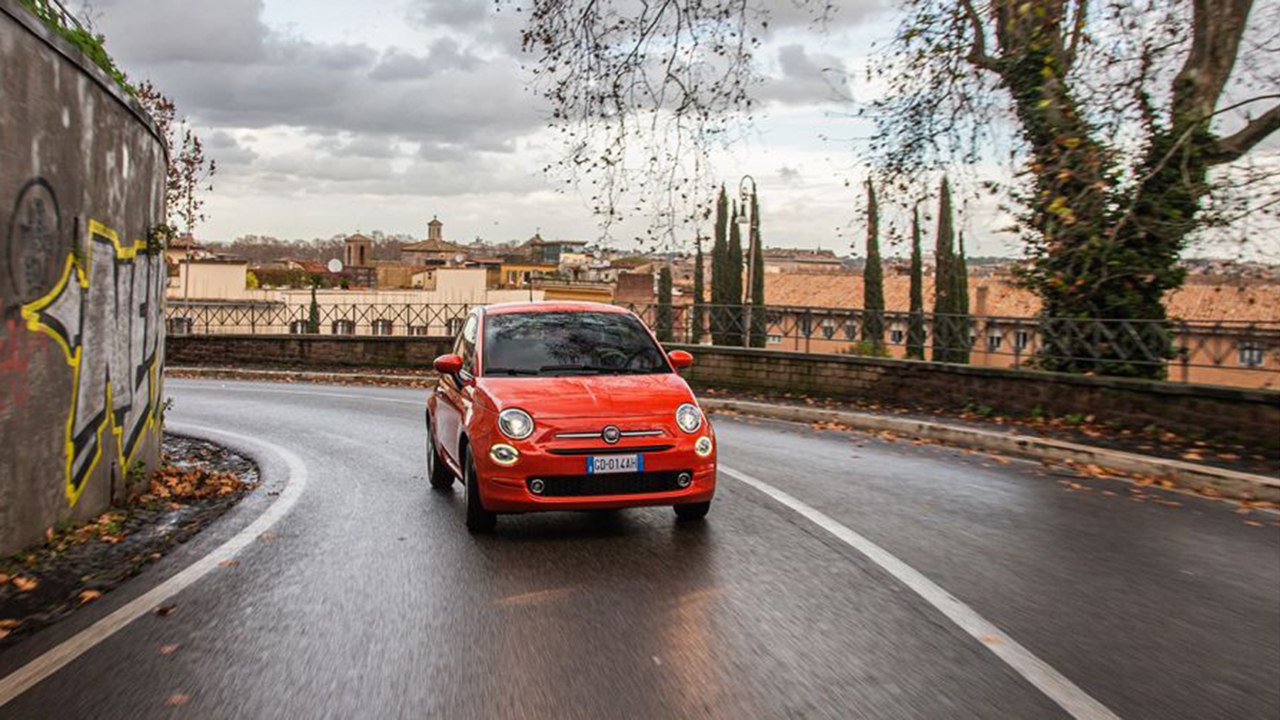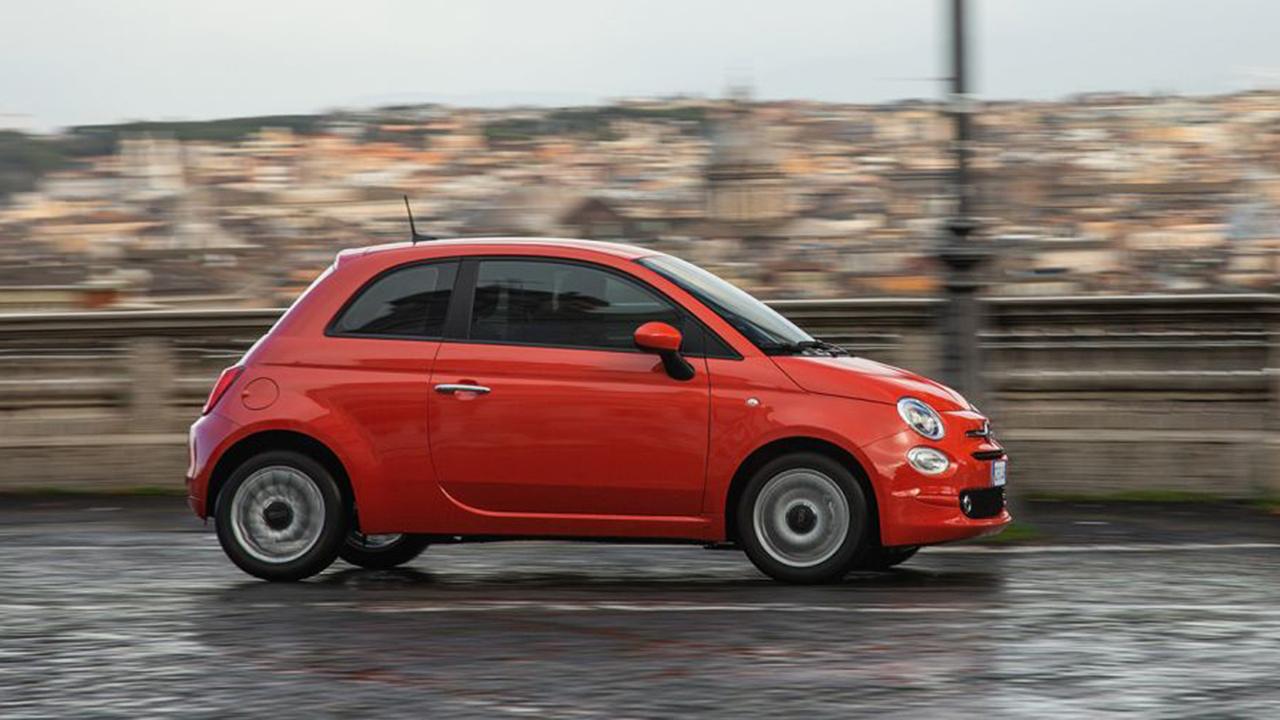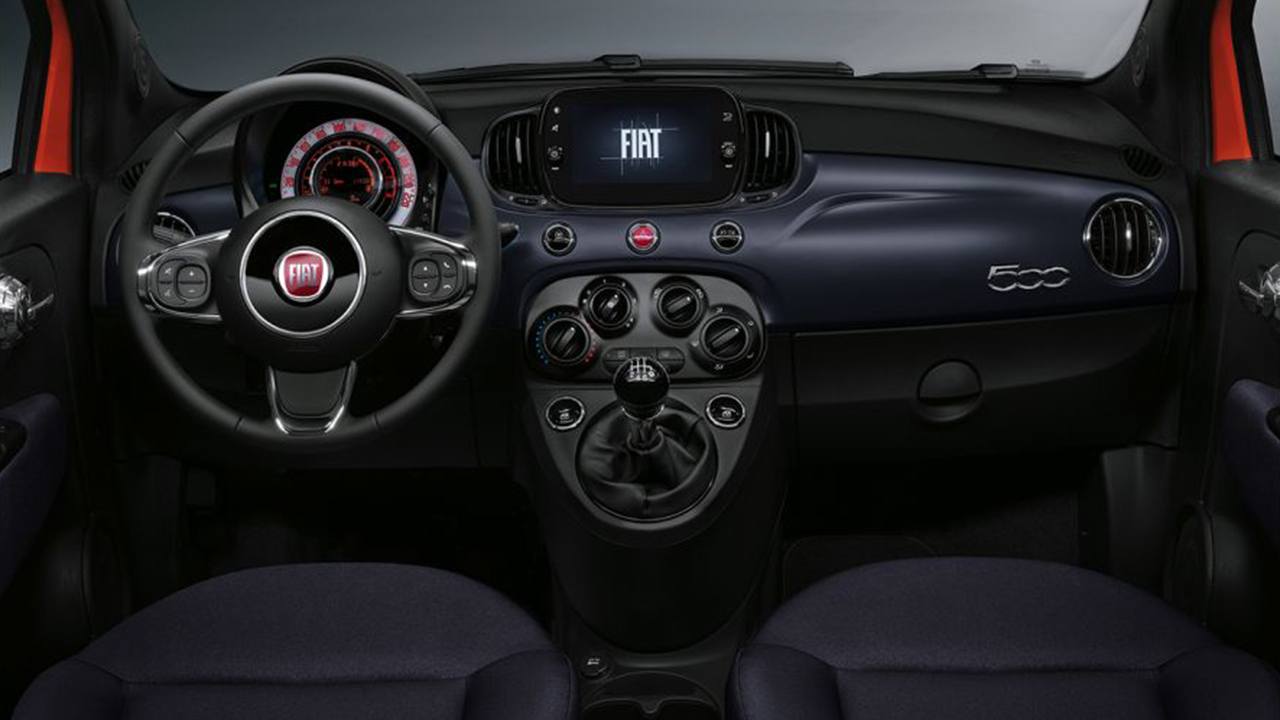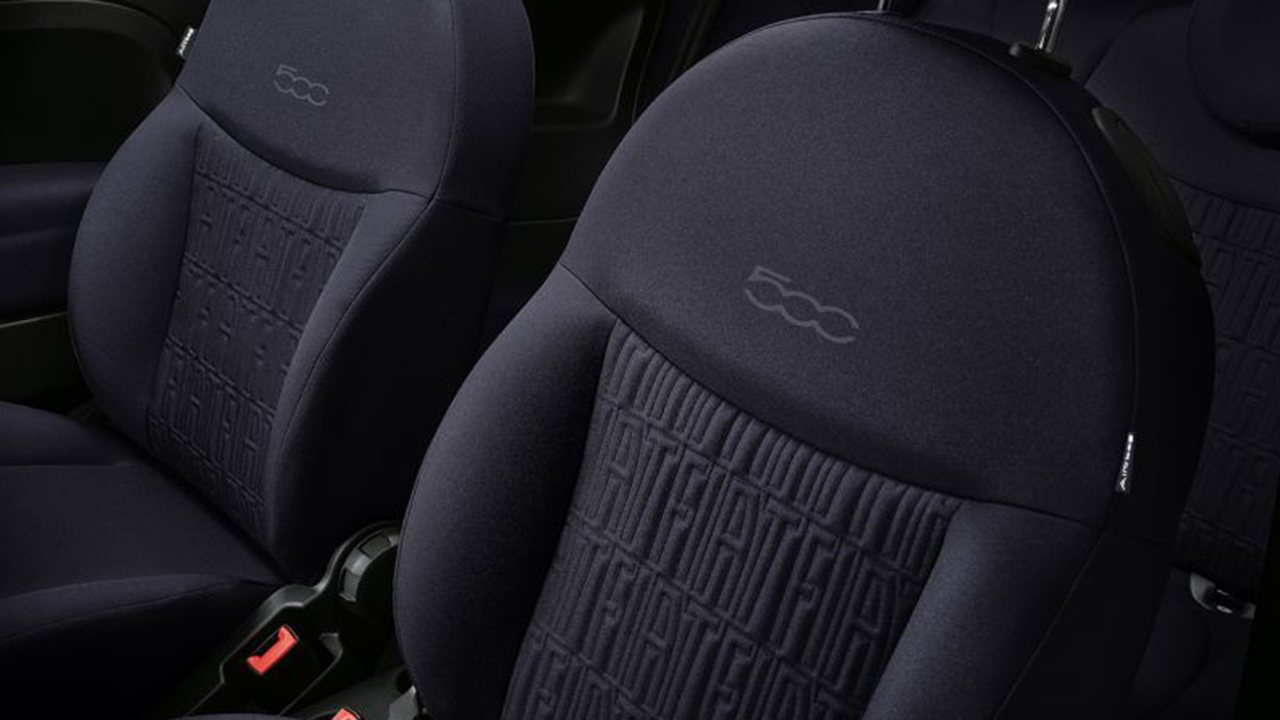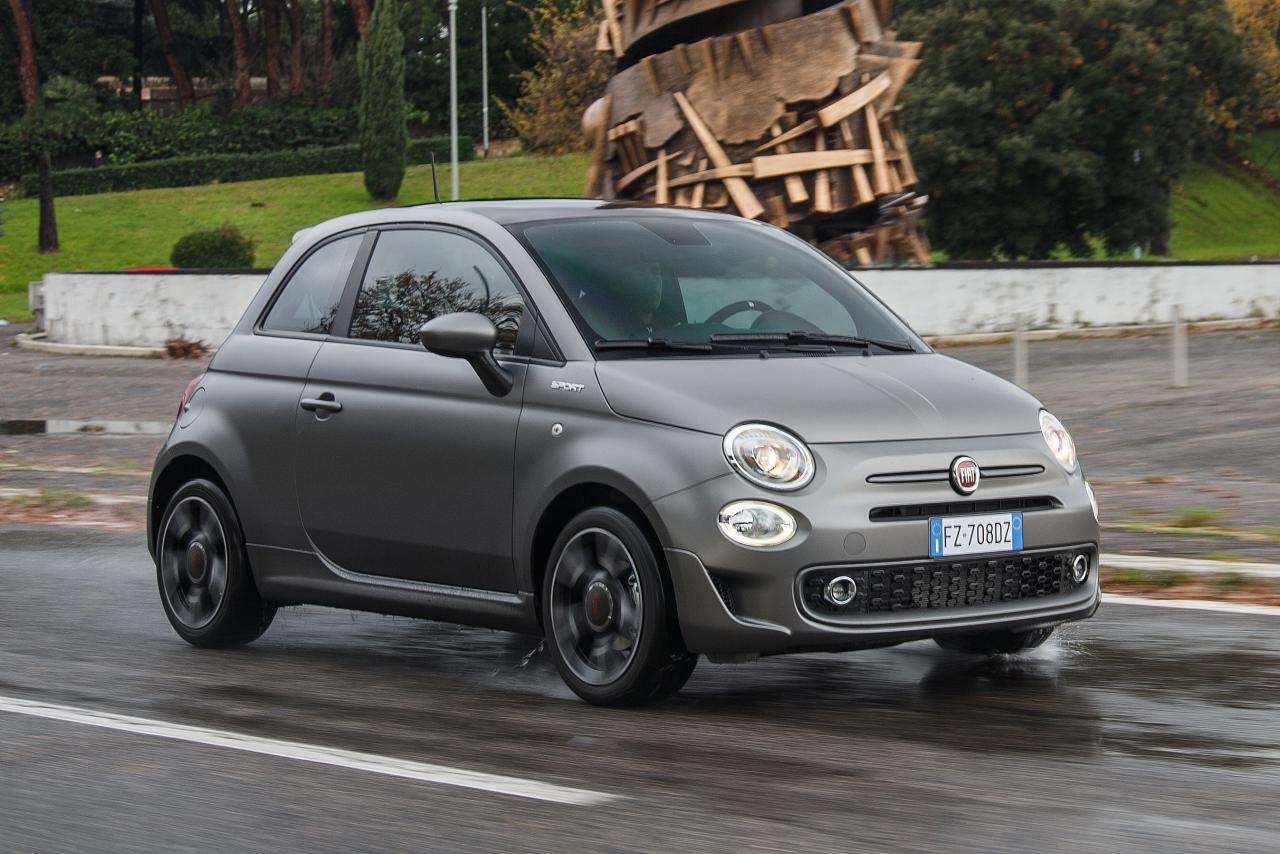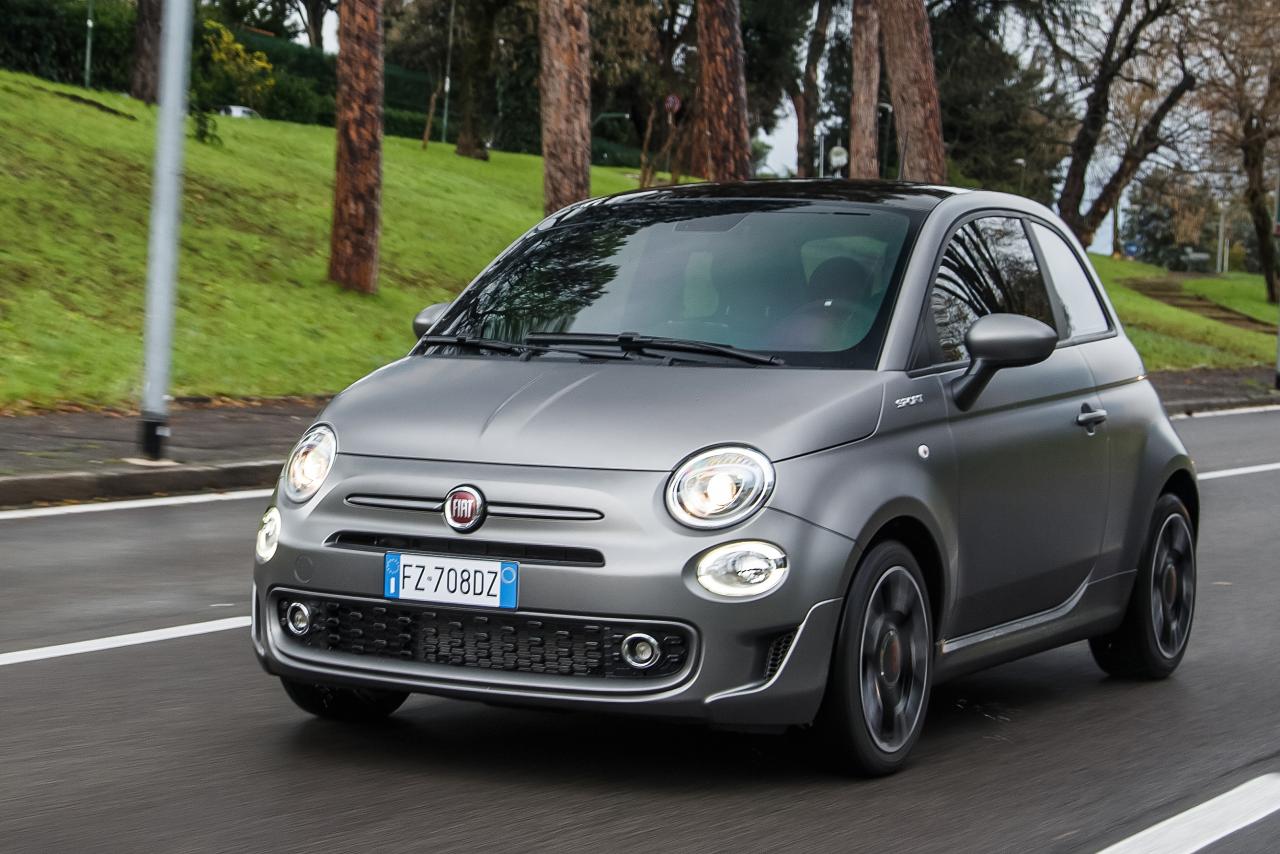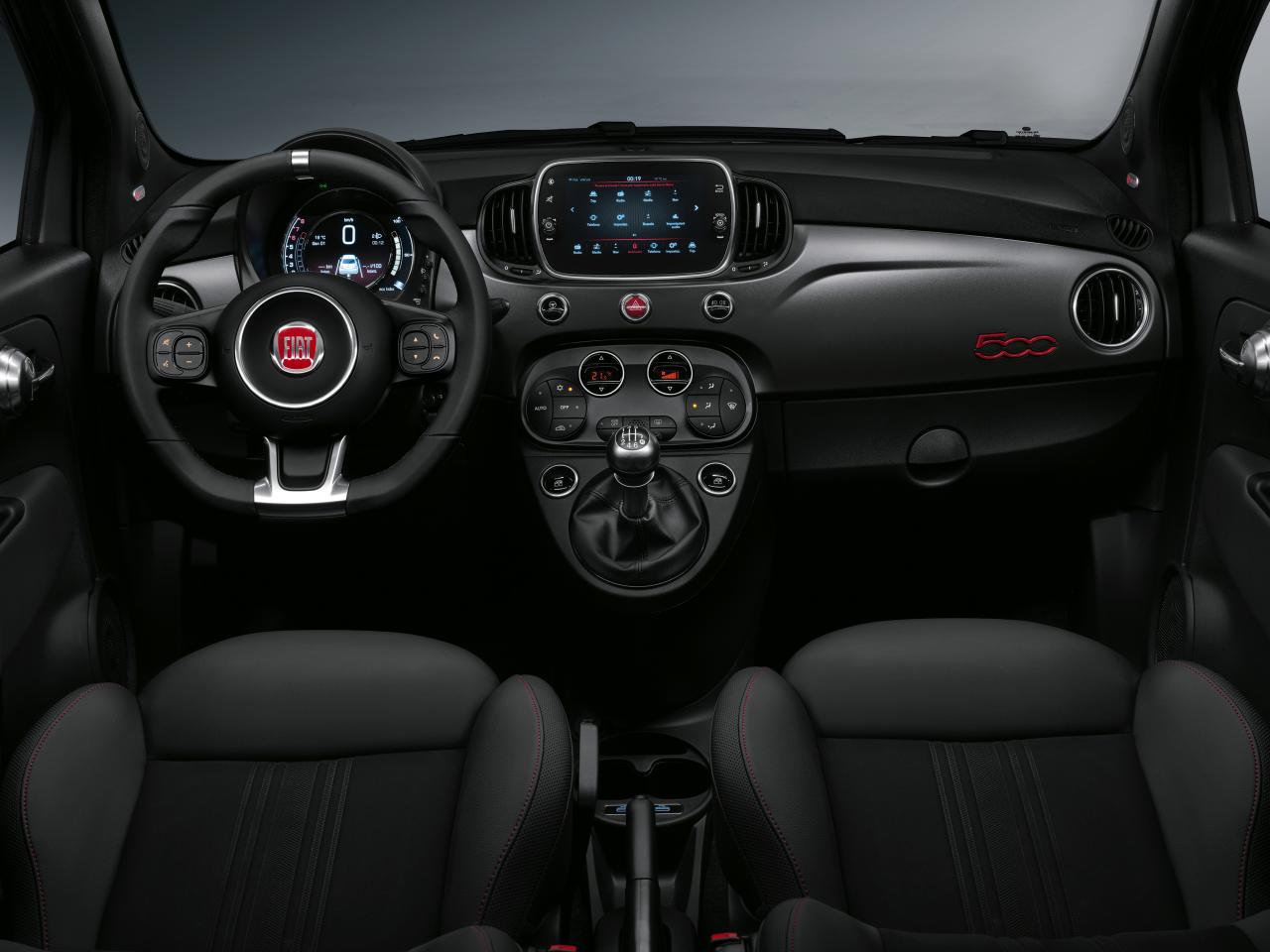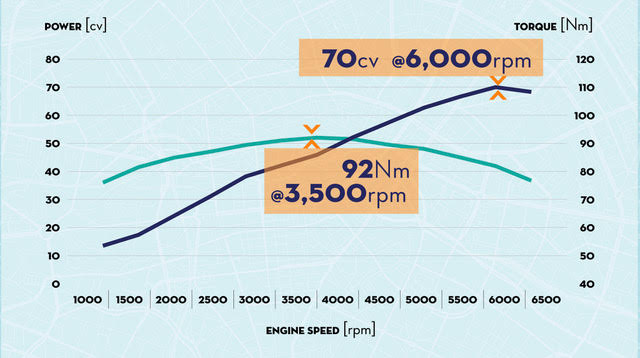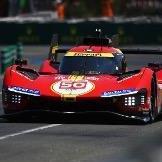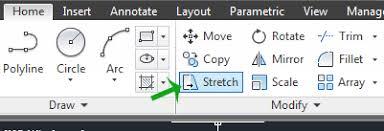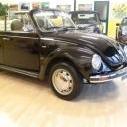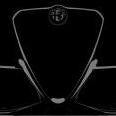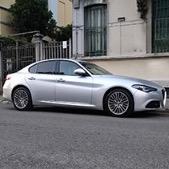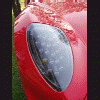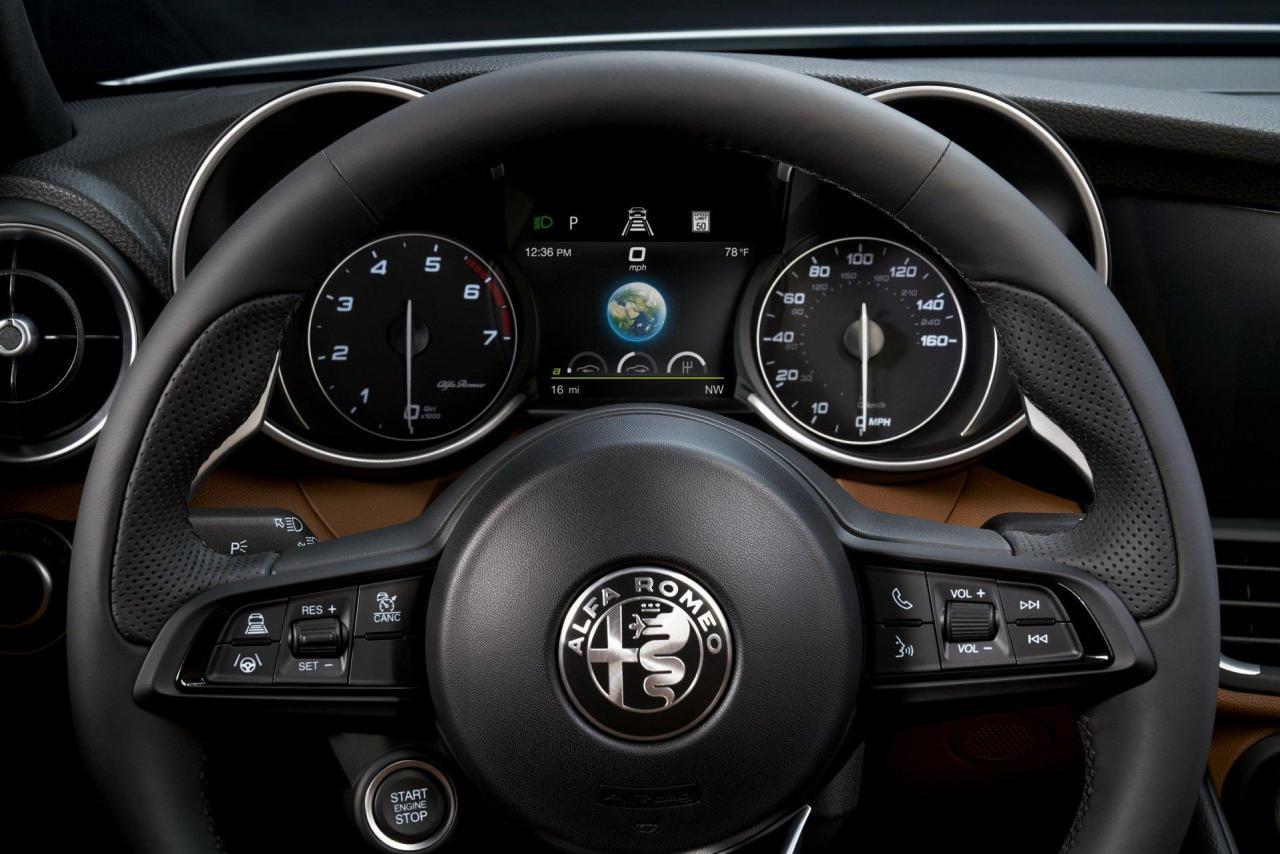Classifica Utenti
Contenuti più Popolari
Stai visualizzando i contenuti con il più alto punteggio, pubblicati in data 15/12/2019 e localizzati Tutte le aree/sezioni
-
Ci sono tante signore benestanti che comprano 500, magari non vogliono una 1.0 asfittica ma neppure una Abarth ignorante. Una 500 con 90-100cv ma ricca di coppia non è una alternativa alla Abarth.12 punti
-
Scusatemi, ma preferite avere 210 CV belli lineari che spingono da 2000 rpm a 4500 rpm o un motore da 250 CV che ha il picco di potenza in 1000 rpm (3000-4000 rpm) ? Inoltre, ripeto, il 2.143 FCA è single turbo ed è attualmente uno dei motori 4L, nella fascia under 2.4 litri, migliori assieme al 4 cilindri 1.999 di Mercedes-Benz (Valmet) per erogazione, consumi e silenziosità. Ma voi lo avete mai guidato il 210 CV per dire che vi servono altri 30 CV? Oppure, avete guidato il 4L Jaguar-LandRover da 240 CV o il BiTDI di Volkswagen? Oppure il D5 di Volvo? Volvo per arrivare ai 235 CV della declinazione D5 ha: 1) Doppio turbo 2) Doppia EGR 3) Sistema PowerPulse (accumulatore ad aria compressa che soffia sulla girante del compressore per ridurre il ritardo di risposta). Ora con la declinazione B5 (mild-Hybrid con sistema 48V) è arrivato a 249 CV (regime fiscale italiano). Non ci vuole nulla a tirare fuori cavalli da un motore, ma il punto è farlo rispettando i limiti di emissione e l'affidabilità nel tempo, oltre a garantire una determinata caratteristica propria. Ovviamente guidate lo stesso 2143 sulla Giulia e sulla Wrangler, poi mi dite7 punti
-
Se aspiri a essere citycar sfiziosa, le versioni più potenti le devi mettere. Altrimenti poi ti posizioni nella fascia bassa dove le auto si vendono al kg.4 punti
-
mancherebbe un motore con qualche cavallo in più però. Il T3 ad esempio... depotenziato a circa un centinaio di cavalli.4 punti
-
Però ci vorrebbe anche un motore più brillante in gamma. o 1.0 aspirato o Abarth è un buco enorme. Cavolo, arriva un motore nuovo in gamma e ne escono 2.4 punti
-
Io se potessi darei un premio a Vidal e tutta l ' équipe Peugeot per il lavoro svolto direi con passione e dedizione .. Design elegante , sportivo e dinamico che contraddistingue ogni singolo modello . La 208 sembra una piccola ammiraglia poi ha le proporzioni perfette ! Trovatemi un ' altra piccola del suo segmento che sia paragonabile ( appeal , proporzioni , interni ) ..!? http://autodesignmagazine.com/2019/07/peugeot-208-personalita-forte/ Peugeot 208 vince il premio Car Design Award 2019 ! I tedeschi soprattutto le case premium non avrebbero mai potuto creare un ' automobile simile .., anche perché nella vita ci sono cose ben più importanti del denaro., you know what I mean ..!? ?3 punti
-
Trittico di Alfa romeo Una originale 145 ristilizzata, auto che non passa di certo inosservata, sia per la linea e sia per il colore. A verderla oggi avrebbe una linea ancora modernissima e immaginatela con le ruote leggermente rialzate e sarebbe una perfetta crossover molto attuale. Ah non riesco ad inserire le altre immagini, troppo grandi!3 punti
-
https://www.instagram.com/portsvision/ https://www.instagram.com/portraittpage/ https://www.instagram.com/globe_portraits/ https://www.instagram.com/portrait_modez/ https://www.instagram.com/photohunted/3 punti
-
Problemi al volano, problemi al turbocompressore, problemi al sistema di distribuzione, altro che acerbo.3 punti
-
Ormai i bestioni Diesel in Italia sono mosche bianche. Forse solo grandi numeri in Europa (alcune regioni). Ma per il resto è marginale. Prendere un V6 Diesel e piazzarlo nel vano motore di una Stelvio o Giulia, non è una operazione impossibile, ma credo sia non profittevole in funzione dei volumi che potrebbe realizzare tale declinazione. In tutto questo, con il M.Y. 2020 hanno già risolto buona parte delle critiche mosse, con buona pace dell'adottare le cagate FullLED o Matrix.3 punti
-
Però bisogna considerare che questo 1.0 ha meno coppia e la esprime a più alto regime del 1.2 quindi nella guida reale risulterà più fiacco del vecchio a meno di non usare di più il cambio. Quindi per me un motore più brioso servirà più di prima. un t3 sui 90cv sarebbe ottimo. Passare da avere 4 motori in gamma (fire, ta 85, ta 105 e multijet) a 1 (perchè il 1.2 durerà poco, non penso che verrà omologato euro6d) forse è un po' eccessivo. avere 2 motori invece che 4 mi pare già una razionalizzazione sufficiente.3 punti
-
Oggi a 17400€ compri in promozione la 595. Sfizio per sfizio, si fa prima a finire sulla scorpioncina.3 punti
-
Se ho capito bene arriverà anche la turbo 3 cilindri. Questi tempi morti però li capisco poco, su un prodotto come 500 che si vende da solo.3 punti
-
Il cambio c’è l’M20 della Abarth. Il problema non è solo la potenza, io un paio di anni fa un pensiero alla Twinair S 105cv lo feci. È che alla fine scoprii che costava appena meno di una 595. A quel punto....3 punti
-
Negli anni 80 la maggior parte dei ventenni lavorava. Quindi con lo stipendio (vero, mica co.co.co o cagate simili) la Uno Turbo ci usciva. Oggi a 20 anni studi, e usi la macchina di famiglia (che non è una Golf GTi) e anche se te la comprano difficile che sia una sportivetta (a me l’avrebbero data sui denti, già dovetti fare carte false per i 98cv della mia Clio*) *e anche a 22 anni mi comprai la prima auto con i miei soldi, un vetusto GTV, ci misero un bel po’ a digerirlo. Oggi per un ventenne immagino sia abbastanza frustrante essere appassionato di auto, specie in città. Il nuovo è fuori portata, l’usato te lo bloccano, tra costi e lotta all’inquinamento sei quasi bullizzato. Però, sotto sotto piacciono, ai raduni storici si gasano.3 punti
-
2 punti
-
È una tua idea o hai delle fonti? Io spero proprio di no, perché Giovinazzi, pur con tutte le attenuanti, non mi sembra proprio un pilota da Top Team. Se vogliono un secondo per Leclerc, deve essere uno veloce, concreto, esperto e che non faccia errori. Uno che se il capitano ha problemi sia in grado di vincere. Uno come Bottas, per dire.2 punti
-
beh proprio le proporzioni perfette non direi, soprattutto per le maniglie troppo in basso e vicine tra loro le trovo davvero fastidiose alla vista, non so cosa ci vedi di ammiraglia poi2 punti
-
Visti i dati di vendita delle auto a gasolio in Europa, che ormai puntano al 30%, direi che la mancanza di un v6 diesel su Stelvio è irrilevante. Gia oggi, così come è Stelvio q4 210 cv fa il km da fermo in 27.8 secondi, contro il 27 netto di mx-5 miata 2.0 184 cv. Differenza del 2,6% circa ?2 punti
-
ma non metto in dubbio che per un uso cittadino sia sufficiente ma perchè non dare un'alternativa a chi magari la usa anche fuori? già passare da 4 motori a 2 mi sembra una razionalizzazione più che adeguataò2 punti
-
Facevo un parallelo non come potenza tout-court, ma come tirare fuori +240 CV da un 2.0 litri sia un'operazione tutt'altro che semplice se fatta rispettando criteri di affidabilità ed emissioni.2 punti
-
La velocità media delle attuali città europee è di circa 30 km/h. Sono d'accordo con te per la rapportatura intelligente del cambio. Ad esempio, con la mia Mazda2 1.3 da 75CV mi trovo a 130 km/h in quinta marcia a quasi 4000 rpm. Però, vado un amore in città e fuori fino ad 80 km/h.2 punti
-
La Punto pesa più della 500, pertanto un piccolo aspirato a benzina su una vettura del genere usata in città non può fare miracoli. Senza dimenticare che sui benzina il piede può fare una grande differenza2 punti
-
Sarebbe tantissima roba. Ipotesi un po' folle ma se nel 2020 andrà forte (se ci tengo a ribadirlo) secondo me anche Giovinazzi potrebbe diventare una seconda guida papabile. Sembra spesso in un mondo tutto suo ma non si permetterebbe mai di alzare la voce e contrastare la Scuderia, è italiano e quindi fa notizia...anzi quelli di scaiquattrocappaaccadi ci potrebbero ricamare fino alla nausea2 punti
-
...mia domanda/ipotesi: ma il B Suv non poteva essere demandato a Lancia al posto di Alfa? Così si dava consistenza a Lancia mentre l'immagine premium del biscione sarebbe stata salvaguardata...2 punti
-
C’è comunque la Abarth, ma un T3 90/100cv o anche 120cv ci vorrebbe... anche mHEV. Cosi fai una gamma moderna e « green » con solo motori ibridi. E sulle Abarth ci vorrebbe il nuovo 1.3.2 punti
-
2 punti
-
Anche Jaguar e Volvo. Inoltre anche BMW e Audi hanno in gamma un 4 cilindri diesel da 240 cv, ma su questo segmento non lo usano (ma fino a poco fa c'erano in gamma). Tutto giustissimo, ma al netto di tutto Alfa offre il motore meno potente in questa fascia di mercato. Giusto, per carità, il 4 cilindri però ha anche alcune caratteristiche positive: minor peso, minor costo di produzione, minor costo di assicurazione, necessita di meno spazio nel cofano. Con ciò non voglio dire che sia meglio di un 6 cilindri, difatti non credo che chi è interessato all'uno prenda in considerazione l'altro e viceversa, dico solo che SECONDO ME offrire un 4 cilindri alla pari con la concorrenza sul valore di potenza massima sarebbe una buona mossa per Alfa.2 punti
-
negli ultimi 6 mesi ho guidato Fiesta 1.1, Polo (la precedente) 1.0 aspirata, la 208 aspirata e la 500 1.2. Il motore più gradevole da guidare (e neanche troppo spompo come pensavo) è stato proprio il Fire.2 punti
-
però non bisogna solo pensare al twinair, prima per chi voleva un motore più brioso c'era anche il multijet, non penso che le vendite fossero così irrilevanti. Poi almeno nei modelli sfiziosi non dovrebbero fare i soliti ragionamenti "interessa solo al 20% dei clienti, si fottano."2 punti
-
I francesi vogliono che sia scritto che 6 posti su 11 del CDA saranno a nomina dei vecchi azionisti PSA. Mah, tipicamente francese. Che Elkann li mandi a fancul e lanci un'OPA su Renault2 punti
-
https://x-engineer.org/automotive-engineering/vehicle/hybrid/mild-hybrid-electric-vehicle-mhev-architectures/ Mild Hybrid Electric Vehicle (MHEV) – architectures In this article we are going to go through different system architectures for Mild Hybrid Electric Vehicles (MHEV), looking into the positioning of the components on the vehicle, the possible control functions and advantages and disadvantages in terms of fuel efficiency and driveability. To recall the different types of hybrid electric vehicles and what makes a mild hybrid electric vehicle, read the following articles: Understanding micro, mild, full and plug-in hybrid electric vehicles Mild Hybrid Electric Vehicle (MHEV) – introduction By architecture, topology or configuration we understand the positioning of the main components of the hybrid electric system on the vehicle. Since the only mechanical link between the electrical system and the rest of the vehicle is done through the electric machine, the MHEV architecture is basically defined by the position of the electric machine and the type of connection with the powertrain / drivetrain (belt, integrated or gear mesh). The 48V electrical system has become the industry standard for mild hybrid MHEV applications for several reasons: it’s relatively simple to integrate on a vehicle it’s modular, safe and compact the mass of the components is relatively small so the impact on the total weight of the vehicle is limited the system cost to performance (fuel efficiency, torque boost) ratio is very competitive With the except of the crankshaft-mounted integrated starter generator (Honda IMA and Mercedes Benz BlueHybrid), all the mild hybrid vehicle architectures presented in this article are based on 48V systems. The powertrain configuration of the MHEV system has significant impact on the performance and characteristics of the vehicle, in terms of: integration cost fuel efficiency dynamic performance (powertrain torque enhancement) Automotive OEMs and automotive Tier 1 system suppliers are currently analyzing and evaluating several major powertrain architectures for MHEVs. The electric machine can be positioned, relative to the other powertrain components, in five major points: Image: MHEV powertrain architectures The brief description of the electric machine connection points is done in the table below. P0 The electric machine is connected with the internal combustion engine through a belt, on the front end accessory drive (FEAD) P1 The electric machine is connected directly with the crankshaft of the internal combustion engine P2 The electric machine is side-attached (through a belt) or integrated between the internal combustion engine and the transmission; the electric machine is decoupled from the ICE and it has the same speed of the ICE (or multiple of it) P3 The electric machine is connected through a gear mesh with the transmission; the electric machine is decoupled from the ICE and it’s speed is a multiple of the wheel speed P4 The electric machine is connected through a gear mesh on the rear axle of the vehicle; the electric machine is decoupled form the ICE and it’s located in the rear axle drive or in the wheels hub Notice that P0 and P1 architectures do not allow the mechanical disconnection of the electric machine from the engine. On the other side P2, P3 or P4 configurations disconnects the electric machine from the engine through a clutch. Belt Starter Generator Architecture (P0) Also know as BiSG from Belt integrated Starter Generator, this mild hybrid topology is the most cost effective due to the limited impact of the 48V system on the existing vehicle architecture. On a hybrid electric vehicle application, there are two major cost drivers: the impact on the existing powertrain components and the high voltage battery. To minimize the integration costs, the vehicle and transmission architecture should be kept the same as for a conventional vehicle. Thus, the easiest way of achieving a minimum cost is to integrate the 48V electric machine into the already existing engine accessories belt drive, by replacing the 12V alternator (generator). Image: MHEV P0 architecure – Belt Starter Generator (BSG) In the BiSG architecture, the internal combustion engine (ICE) and the electric machine can not be separated, they are mechanically linked through the accessory belt. Therefore, one of the disadvantage of this configuration is that, the engine friction torque will be a parasitic loss for the electric machine when it gives boost torque and when it’s recuperating electrical energy. The main characteristics of the BiSG MHEV architecture are summarized in the table below. Electric machine performance Maximum torque (at crankshaft): up to 50 Nm (with belt pulley ratio multiplication, e.g. 2.8) Maximum power: 12 … 14 kW Continuous power: 2.5 … 3.5 kW Efficiency: up to 85% Fuel Efficiency New European Driving Cycle (NEDC): 10 … 12 % Worldwide harmonized Light vehicles Test Procedure (WLTP): 7 … 9 % Hybrid modes (functions) Idle Stop & Start Moving Stop & Start Engine load shift Torque assist (fill) Torque boost Sailing / Coasting Energy recuperation Brake regeneration Advantages Low cost of integration Air or liquid cooled electric machine Integrated inverter (with electric machine) Size modularity for the electric machine Speed / torque ratio possible between electric machine and ICE results in lower Power demand from the electric machine Disadvantages Limited torque capacity due to belt drive Energy recuperation affected by engine friction losses Overall characteristics Torque Boosting Capability: Medium (limited by belt slip, durability) Electrical Energy Recuperation: Medium (due to engine losses) Driveability Improvements: Medium (due to limited torque boost) Electrical Creep / Drive: Not possible (due to limited torque and belt drive) Packaging: Easy components integration with limited impact on other components System Efficiency: Medium (mainly due to belt-drive integration on the FEAD) The BiSG MHEV architecture has a significant impact on the design of the Front End Accessory Drive (FEAD). The belt durability needs to be increased to sustain higher torque and more engine off/on cycles. The variable belt tensioners have to provide: increase tension during cranking and boost (torque from electric machine to engine) increase tension during recuperation (torque from engine to electric machine) reduce tension during normal driving (in order to reduce friction losses) There is also a significant impact on the noise, vibrations and harshness (NVH) of the engine and on the durability of the main bearing of the engine’s crankshaft. Currently, all the 48V BiSG MHEV applications still use the 12V starter. The reason is that the cold engine start, especially after a long period of inactivity, demands a high electric machine torque (due to high engine friction). This is a limitation on the BiSG because the amount of torque which can be transmitted is limited by the belt slip. With an improved design of the FEAD belt and increased durability, the 12V starter can be removed and all its functions performed by the 48V electric machine. An example of MHEV is the new Audi A8, which features a 48V electric system. Image: Audi A8 48V MHEV Credit: Audi DC/DC converter low voltage battery (12 V) high voltage battery (48 V) 48V belt-drive starter-generator 3.0 TFSI internal combustion engine There are also a significant number of Tier 1 suppliers, which can provide 48V P0 mild hybrid systems ready to be integrated in automotive applications. Valeo’s 48V system MHEV Image: Valeo Hybrid4All 48V MHEV system components Credit: Valeo Powertrain Control Unit (PCU) 14V battery sensor Belt Starter Generator (BSG) 8 – 12 kW / 55 Nm Peak, with integrated inverter DC/DC converter, 60 V / 12 V, 2 kW 48V battery, 200 – 600 kJ Bosch’s 48V system MHEV Image: Bosch 48V MHEV – components of the boost recuperation system Credit: Bosch low voltage battery (12 V) DC/DC converter electric machine (motor & generator) high voltage battery (48 V) Continental’s 48V system MHEV Image: Continental 48V MHEV system components Credit: Continental electric machine with integrated inverter DC/DC converter (48 V / 12 V) Li-Ion battery Delphi’s 48V system MHEV Image: Delphi’s 2nd Generation 48V MHEV system Credit: Delphi 48-VOLT LAUNCH ASSIST A. Electric motor/generator: starts engine during Stop & Start operation and provides some power to the wheels; later, it charges the battery during braking B. E-charger (electric air compressor): provides boost while driving away from stop and complements the exhaust turbocharger, eliminating the turbo lag 48-VOLT SYSTEM 1. 48-volt inverter: changes DC battery current to AC current to power the electric motor 2. 48-volt lithium-ion battery: stores energy regenerated during braking to be used later to power vehicle 3. Battery controller: regulates the state of charge in the battery 4. Power distribution box: contains built-in fuses 12-VOLT SYSTEM 5. DC/DC converter: changes 48 volts to 12 volts 6. 12-volt battery – your old friend, but smaller 7. 12-volt electrical distribution center: powers the center console, seats and windows as well as other 12-volt devices 48V P0 mild hybrid architecture is the mainstream technology adopted by the automotive manufacturers for MHEVs, because it combines a relatively low integration cost and considerable benefits in terms of CO2 emissions reduction and dynamic performance boost. Crankshaft mounted electric machine (P1) The P1 architecture, with the electric machine connected directly to the crankshaft, is the solution adopted by Honda on their first generation Integrated Motor Assist (IMA) technology. The electric motor functions as a generator, during vehicle deceleration, as an engine starter, and as a motor (to assist the engine) during vehicle accelerations. Image: MHEV P1 architecture – Integrated Starter Generator (ISG) One of the biggest advantage of this solution is that the electric motor can provide higher torque than the BiSG, since there is no belt limitation (due to slip). However, since there is no speed / torque ratio between the electric machine and crankshaft, the torque requirements on the electric motor can be quite demanding. Two examples of P1 MHEV architectures are: Honda Insight Hybrid 2009 (with Integrated Motor Assist technology) Mercedes Benz S400 Bluehybrid 2010 Image: Integrated Motor Assist (IMA) for mild hybrid Credit: Honda For example, the main characteristics of the crankshaft-mounted electric machine for mild hybrid Honda Insight 2009 are summarized in the table below. Electric machine performance Maximum torque (at crankshaft): up to 34 Nm Maximum power: 10 kW Efficiency: up to 94% Hybrid modes (functions) Idle Stop & Start Moving Stop & Start Engine load shift Torque assist (fill) Torque boost Sailing / Coasting Energy recuperation Brake regeneration Advantages Higher efficiency The 12V starter can be removed Disadvantages Output torque limited by the size of the electric machine Energy recuperation affected by engine friction losses High impact on existing vehicle architecture Higher overall cost of the electrical components Air cooling not possible for the electric machine Overall characteristics Torque Boosting Capability: High (if electric machine is capable) Electrical Energy Recuperation: Medium (due to engine losses) Driveability Improvements: Medium (depending on the torque capability of the electric machine) Electrical Creep / Drive: Possible (depending on the torque capability of the e-machine) Packaging: Difficult components integration (powertrain specially designed for this architecture) System Efficiency: High (no gear mesh or belt losses) Image: Mercedes Benz S400 BlueHybrid (MHEV) Credit: Daimler The primary advantage of a P1 mild hybrid architecture, compared with P0, is the removal of the belt drive. This means that the efficiency increases a bit (no more belt losses) and the electric machine torque can be higher in terms of amplitude and response (no more belt slip). The functions (modes) performed by this mild hybrid topology are similar with those of a BiSG (P0), but, overall, P1 configurations have two big disadvantages: higher cost and higher impact on the the existing vehicle architecture. Therefore, vehicle manufacturers and system suppliers are not investing in the further development of crankshaft-mounted integrated starter generator solution for MHEV applications. Driveline side electric machine MHEV architectures Both P0 and P1 mild hybrid configurations have the electric machines on the engine side, without the possibility of mechanical disconnection. This makes torque boosting and energy recuperation not very efficient because of the torque losses. Moreover, recuperating electrical energy with the engine off, during coasting, is not possible. The P2, P3 and P4 mild hybrid architectures are better in terms of energy flow efficiency, mainly because of the positioning of the electric machine. In these types of configurations, the electric machine is positioned after the driveline connecting device (clutch), on the input shaft of the transmission (P2), on the output shaft of the transmission (P3) or on the rear differential (P4). Image: MHEV P2 architecture – side EM Image: MHEV P2 architecture – integrated EM In a P2 configuration, the electric machine can be side attached to the transmission, connected through a belt, or integrated in the transmission, connected through a gear mesh. The main advantage of P2 architecture is the increased energy recuperation potential and the availability of additional hybrid control functions (electric creep/drive or energy recuperation during coasting). The main disadvantage is the higher integration cost of such a system. Image: MHEV P3 or P4 architecture In the P3 mild hybrid architecture the electric motor is attached on the transmission, on the output shaft. In the P4 architecture, the electric motor is mounted on the rear axle drive or wheel hubs. The main advantage of the P3 or P4 topology is the highest energy recuperation potential. Compared with the P0, P1 and P2 configurations, the engine and transmission losses, when the driveline is disconnected, are not taken into account during energy regeneration. The P3 and P4 architectures are have also the potential for electric driving mode (creep) if fitted with a high torque electric machine. The P4 architecture gives the vehicle four-wheel drive capabilities, with the front axle powered by an internal combustion engine and the rear axle powered by an electric motor. Due to the fact that the electric machine is on the driveline side, for any P2, P3 or P4 architecture, in order to perform engine Stop & Start, another electric machine has to be fitted on the engine side. This function can be achieved with a standard reinforced starter (12 V) or a belt-integrated starter generator (12 V or 48 V). The main characteristics of P2, P3 and P4 mild hybrid architectures are summarized in the table below. Electric machine performance Maximum torque (at crankshaft): up to 50 Nm Maximum power: 21 kW Efficiency: up to 95% Fuel Efficiency New European Driving Cycle (NEDC): 19 … 22 % Worldwide harmonized Light vehicles Test Procedure (WLTP): 14 … 16 % Hybrid modes (functions) Idle Stop & Start (if additional electric machine on engine side) Moving Stop & Start (if additional electric machine on engine side) Engine load shift (through the road) Torque assist (fill) Torque boost Sailing / Coasting Energy recuperation Brake regeneration Electrical driving (creep) Advantages Highest efficiency Electric driving (creep) Four/All Wheel Drive Mode (P4 architecture) Disadvantages Requires an additional electric machine for engine Stop & Start High impact on existing vehicle architecture Higher overall cost of the electrical components Air cooling not possible for the electric machine Overall characteristics Torque Boosting Capability: High (if electric machine is capable) Electrical Energy Recuperation: High (not affected by engine losses, partly by transmission losses) Driveability Improvements: Medium (depending on the torque capability of the electric machine) Electrical Creep / Drive: Possible (depending on the torque capability of the e-machine) Packaging: Difficult components integration (powertrain specially designed for this architecture) System Efficiency: High (only gear mesh losses) Getrag is developing a dual clutch transmission with integrated electric motor for high-torque mild-hybrid powertrain. For example, the hybrid variation 6HDT451 is based on the Getrag Powershift 6DCT451 and uses the integrated electric motor to allow for additional reduction in CO2 emissions by more than 10 % in the New European Driving Cycle (NEDC). The Mild-Hybrid 6HDT451 was developed for front transverse installation in the middle class and upper middle class segments and in sport utility vehicles (SUV). Total torques of up to 450 Nm can be transferred with simultaneous combustion engine and electric motor operation. The Getrag Powershift transmission 6HDT451 can be easily combined with all-wheel drive and guarantees start/stop functionality without additional components for the transmission. Image: Getrag Hybrid Double Clutch Transmission The transmission is integrating a high-speed electric machine with the following characteristics: scalable performance by using different electric machine lengths, from mild to plug-in hybrid architectures electric machine power between 26 – 65 kW (from mild to plug-in hybrid architecture) electric machine voltage between 48 – 400 V (from mild to plug-in hybrid architecture) Valeo is also working to consolidate its world leading position in electrical systems and further accelerate its expansion in this field. Valeo’s 48V electrified powertrain solutions can be applied across all vehicle segments, to both gasoline and diesel engine models. They are particularly well-suited to urban cars and compact sedans, which are the top-selling vehicles on the European market. Image: Valeo 48V Electric Rear Axle Drive (ERAD) At the 2016 Paris Motor Show, Valeo introduced its 48V e4Sport mild hybrid system, a new solution designed to increase the dynamic performance of a vehicle while reducing the fuel consumption and CO2 emission of the internal combustion engine. The 48 V system consists of several main components: an integrated belt starter generator (BiSG) an electric supercharger an electric rear axle drive (ERAD) a high voltage battery (48 V) a DC/DC converter (48 – 12 V) The 48V e4Sport recovers a maximum amount of braking energy and stores it in a 48V battery for various uses, such as: increasing engine torque, via the starter-generator maximizing engine power during acceleration and boost phases, using the electric supercharger driving in all-electric mode and, when on low-grip surfaces, improving performance by connecting the rear axle to the 48V eRAD, effectively transforming the vehicle into a four-wheel drive The MHEV systems is continuously evolving, going towards 48V P4 architectures with integrated electrical supercharging. Image: Valeo’s roadmap for 48V mild hybrid systems Credit: Valeo Some key aspects to be retained regarding MHEV architectures: first mild hybrid systems introduced by vehicle manufacturers were P1 but they are currently being replaced by P0, P3 and P4 the industry standard for MHEV is based on the 48 V electric network the P0 architecture is the current most used mild hybrid solution the market is evolving towards P4 architectures due to higher benefits in terms of CO2 reduction and efficiency electrical supercharging is going to be integrated with most of the 48 V MHEVs2 punti
-
Dopo il "successo" del TA hanno pensato bene di riprovarci, comunque la clientela 500 è ormai polarizzata tra chi la vuole citycar (con o senza qualche lusso) e chi vuole la bombetta. Comunque il 1.2 Fire è proprio duro a morire.2 punti
-
Panda e Ypsilon dovrebbero essere ordinabili a febbraio e arrivare nei concessionari ad aprile. 500X e Tipo sono previste verso fine 2021.2 punti
-
2 punti
-
L'unica cosa sbagliata è che è uscito un poco acerbo. Se guidavi col piede leggero faceva i più di venti con un litro. Se spingevi avevi 105cv e 200nm di coppia e ti divertivi parecchio. Oltretutto lo spernacchiamento mi metteva di buon umore. Diciamo che era fin troppo raffinato e costava un po' troppo.1 punto
-
Volvo e Alfa sono due concetti diversi. Per me sono proprio imparagonabili. ☏ Mi A1 ☏1 punto
-
Questo segmento di clientela è diffusissimo per esempio in Svizzera, e sono tutte Twinair. So che la Svizzera non fa testo, però un motore sulla 90ina ci vuole e fa rabbia sapere che lo hanno e non lo mettono. Il 1.4 100 hp onestamente beveva un casino, e andava solo agli alti. Con un Turbo di pari potenza la storia cambierebbe ☏ SM-A505FN ☏1 punto
-
Ma quanto rompono i c******i sti francesi? Mamma mia, se fanno saltare anche sta fusione dovrebbero farsi un esamino di coscienza1 punto
-
Povera quella Scorpio... non fa una bella fine. ?1 punto
-
Ma basta con sta Tp. Poi manco si può disattivare l'esp, se intendete fare i drift. ? Comunque è vero che le versioni top sono sempre TI, anche per un certo tono tecnologico che i possessori vogliono avere. E per chiudere comunque la Q4 tira tutto dietro, e lo sapete bene che eventualmente viene chiamato l'anteriore in aiuto.1 punto
-
Sono abbastanza sicuro che il 2020 sarà l'ultimo anno di Vettel alla Ferrari. E sono pronto a scommettere una cifra ragionevole sulla coppia Leclerc-Sainz nel 2021. Non vedremo mai né Lewis né Max in rosso (per fortuna).1 punto
-
1 punto
-
1 punto
-
1 punto
-
Ci sono comunque cartelli con delle tariffe prefissate (se ricordo bene sia al porto che al centro) nella zona ritiro bagagli. Prima di entrare nel taxi dici che vuoi la tariffa fissa, per me ha funzionato senza problemi.1 punto
-
L'unica cosa sicuramente superiore di PSA è il marketing. Sono stati molto bravi a costruire un'immagine di "near premium" per Peugeot. Citroën e Opel sono invece ancora nel gruppone. DS, per ora, non è niente.1 punto
-
1 punto
-
Tutta la gamma FIAT no, e poi una Tipo Abarth chi la prenderebbe? Ma almeno la 5ooX lo meriterebbe.1 punto
La Leaderboard è riferita all'orario Roma/GMT+02:00







